The Nabataeans built Petra as their capital city starting around 312BC. It became a major caravan trading center situated between the Red Sea and the Dead Sea. Petra was half built, half carved into the red sandstone rock. It is surrounded by mountains riddled with passages and gorges. Essential this region was dry and arid but the Nabataeans built an ingenious water management system of channels, tunnels, diversion damns combined with a vast network of cisterns and reservoirs that controlled and conserved the seasonal rains. This enabled the city to prosper by controlling the main caravan route as a stop for food and water. See also this post dated 12/03/2014 for Nabataean tombs in Saudi Arabia,
Petra became home to roughly 30,000 people. The city had a short life and was eventually abandoned around 106AD. The city was eventually absorbed into the Roman Empire who shifted the trade routes to the sea. It was rediscovered in 1812 by a Swiss traveler, by 1985 it became a UNESCO World Heritage Site.
Petra is sometimes referred to as the Rose City due to the beautiful color of the stone it is carved from. It is one of the world’s most famous archaeological sites. It is now Jordan’s most visited tourist attraction and named one of the New 7 Wonders of the World. It is on several “must see lists of places to visit” before you die. A vast amount of the city is undiscovered , 85% is still underground and untouched.
The Nabataeans were able to build a vast network of elaborate tombs and temples, religious high places and public buildings including theatres, amphitheatres, temples, palaces, agricultural terraces and paved roads.
We had a guided tour for the first 2-1/2 hours, that started first thing in the morning. The rest of the day was free for us to roam around the site. We walked from the entrance complex along a dusty path to the entrance of Petra called the Siq. The Siq is 3/4’s of a mile walk through a long, deep, narrow and sometimes dark gorge, in some areas only 10 feet wide. Steep cliffs soar on both sides in some places 250+ feet high, as you wind around this stunning natural geological feature formed from a deep split in the sandstone rocks. It also served to collect water, channels were cut into the sides of the stone. We slowly walked taking in this stunning site as horse drawn carts whisked by ferrying people through the Siq. Emerging from the Siq gives you the first glimpse of the Treasury facade. This is the pride and joy of Petra, the most beautiful monument in the complex. This 100′ wide and 141′ high structure is breathtaking. It was carved in the first century BC as a tomb for one of the important kings. The elaborately carved façade represents the engineering genius of the people of this time. Much of the architecture was excavated out of the rock cliffs starting from the top and working their way down.
Just around the corner from the Treasury the narrow gorge opens up into a huge expanse of carvings and tombs on both sides of the cliffs. Here is where the horses disappear and small groups of camels are available for those more adventurous to tour around this huge complex. Continuing down the main road is the Roman theatre that holds 8500 people, and further down on the other side are the Royal Tombs. The route turns to the left down the Colonnaded Road, where you will find the old commercial part of Petra. At one time artisan workshops lined the street. Above the shops is The Great Temple and beyond that is the Temple of the Winged Lions. Just before the Petra Mountains begin is the House of the Daughter of Pharaoh, the only remaining temple actually built at Petra rather them being carved into the rock. I am adding a part two to this post because of the number of pictures I would like to show you. Enjoy the pictures.

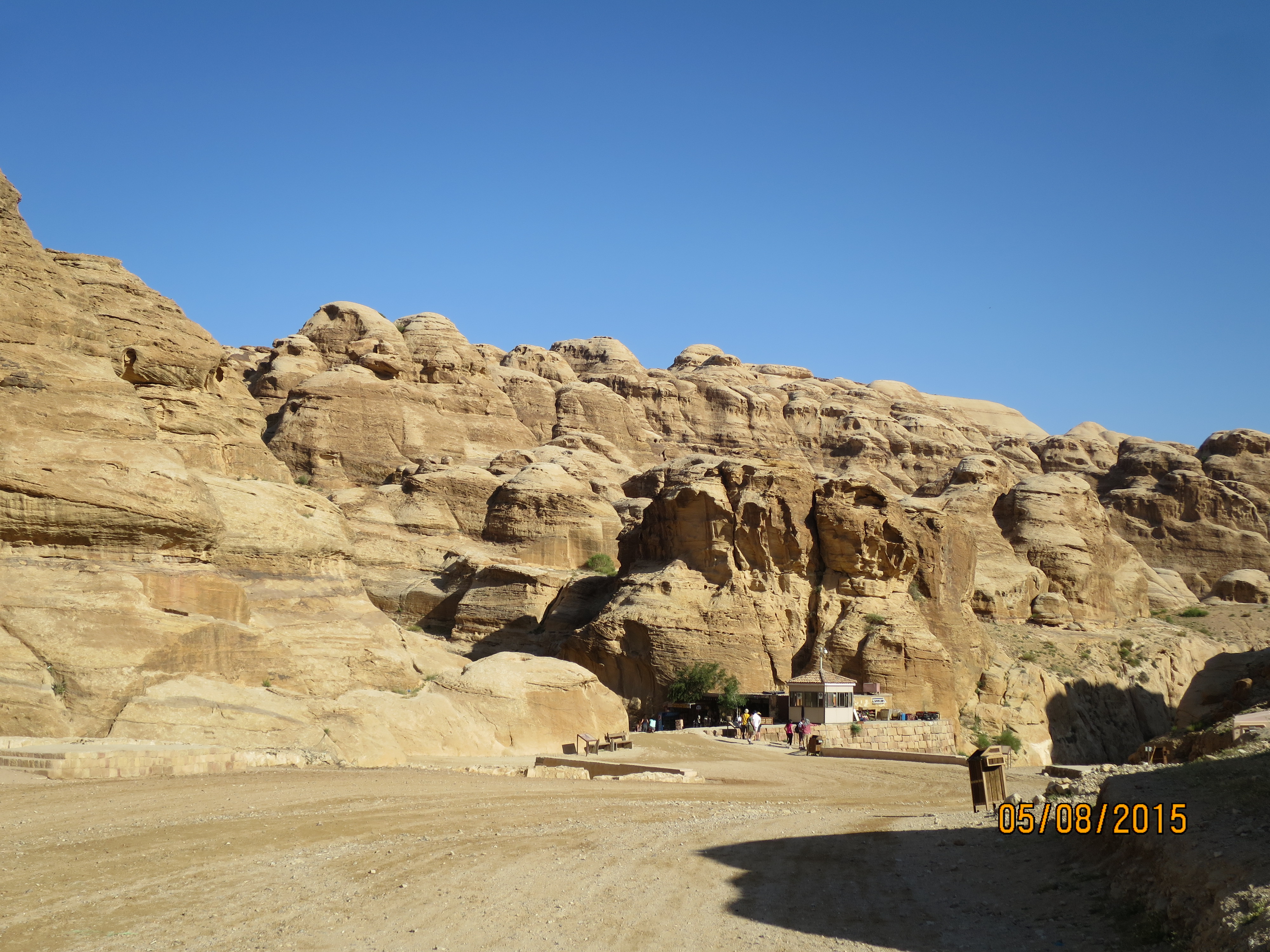
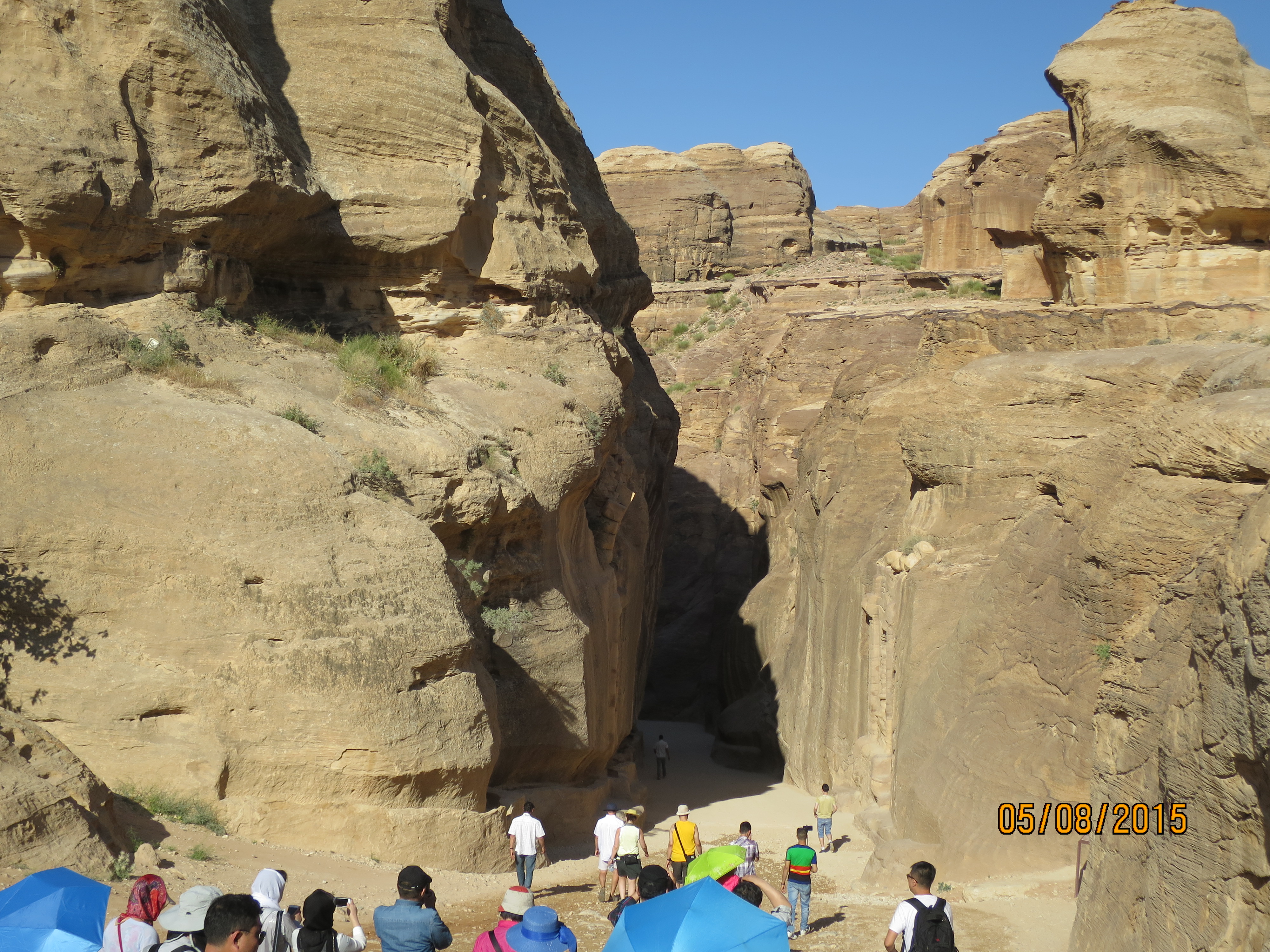
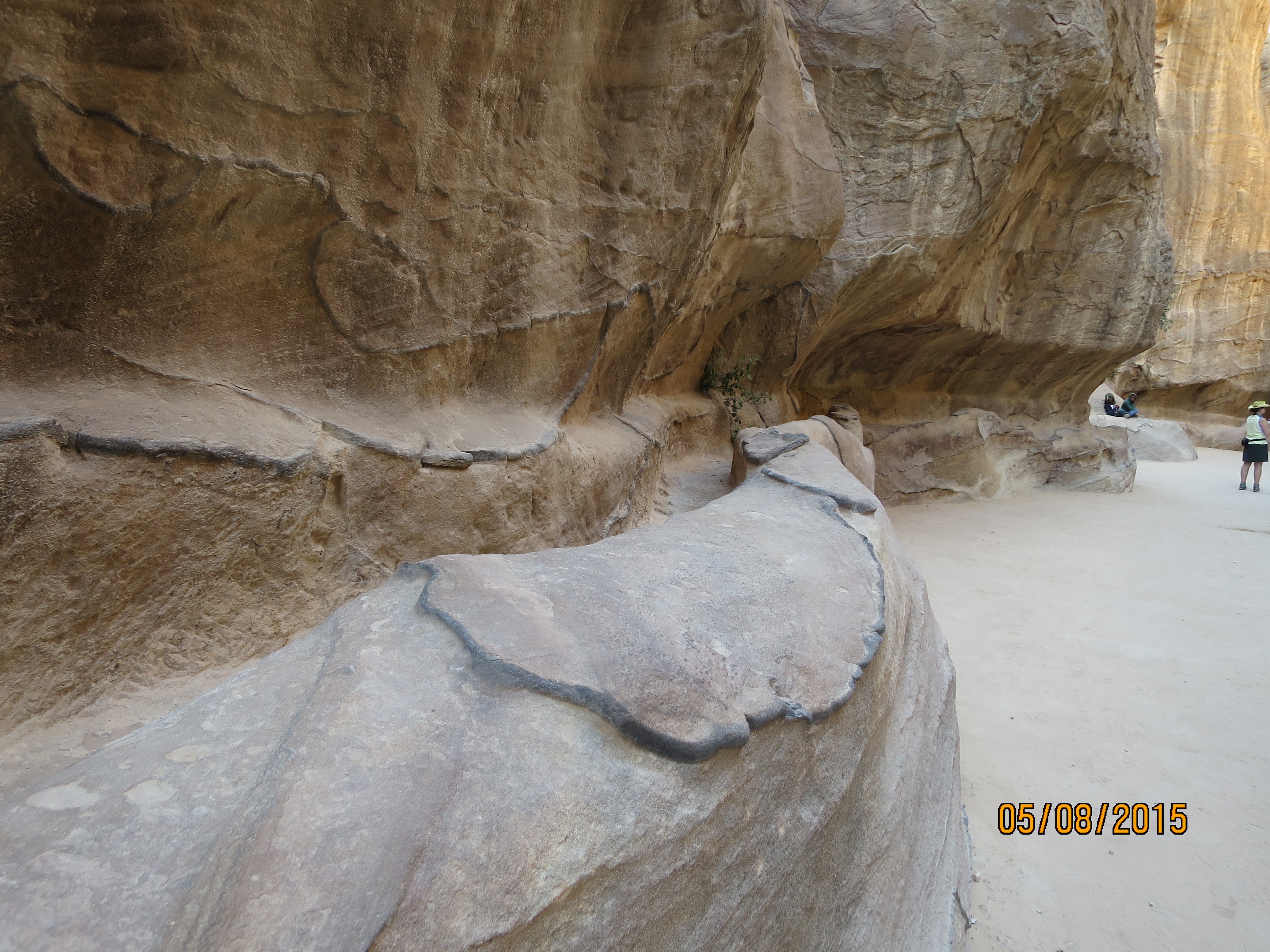
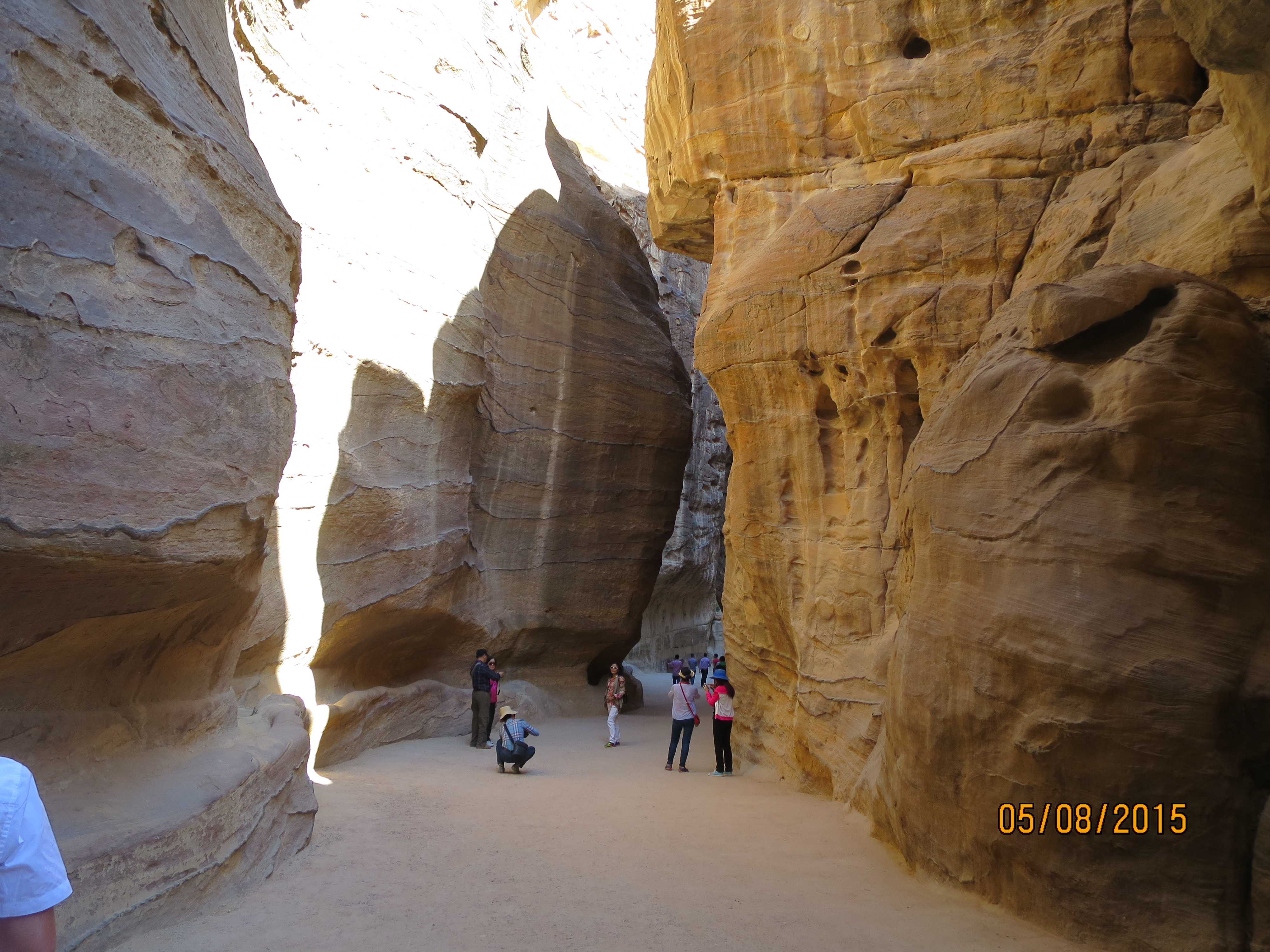
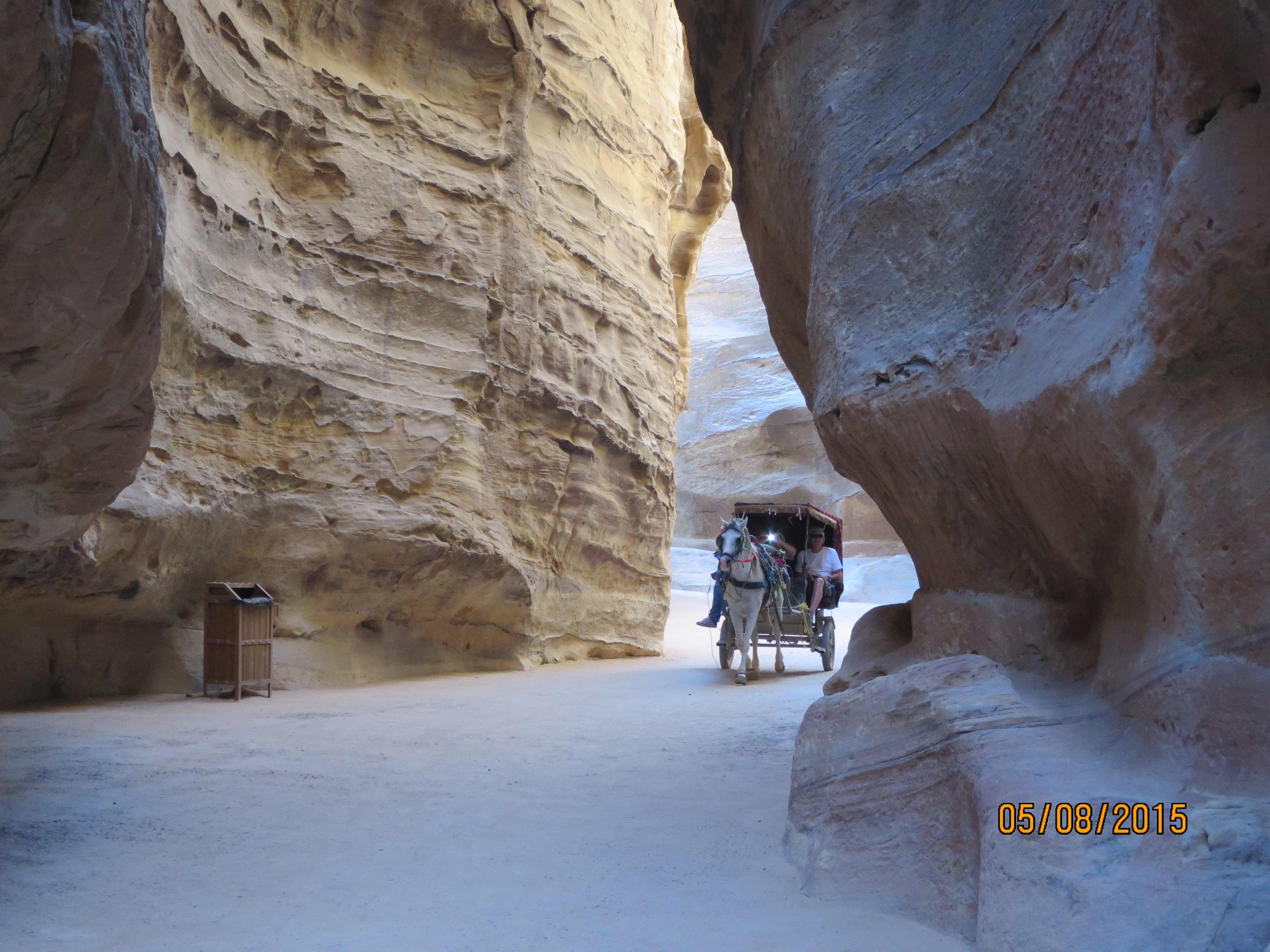
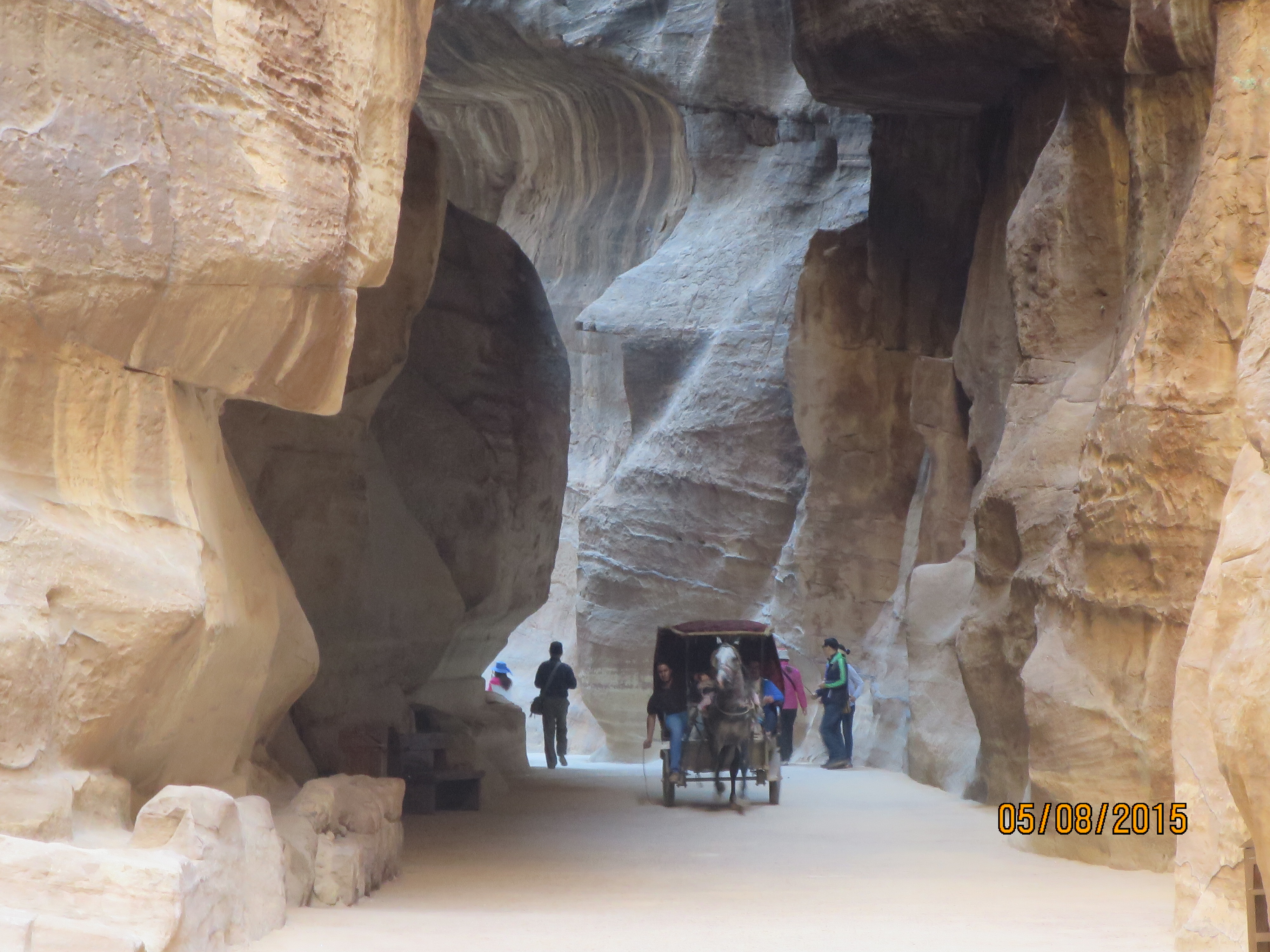
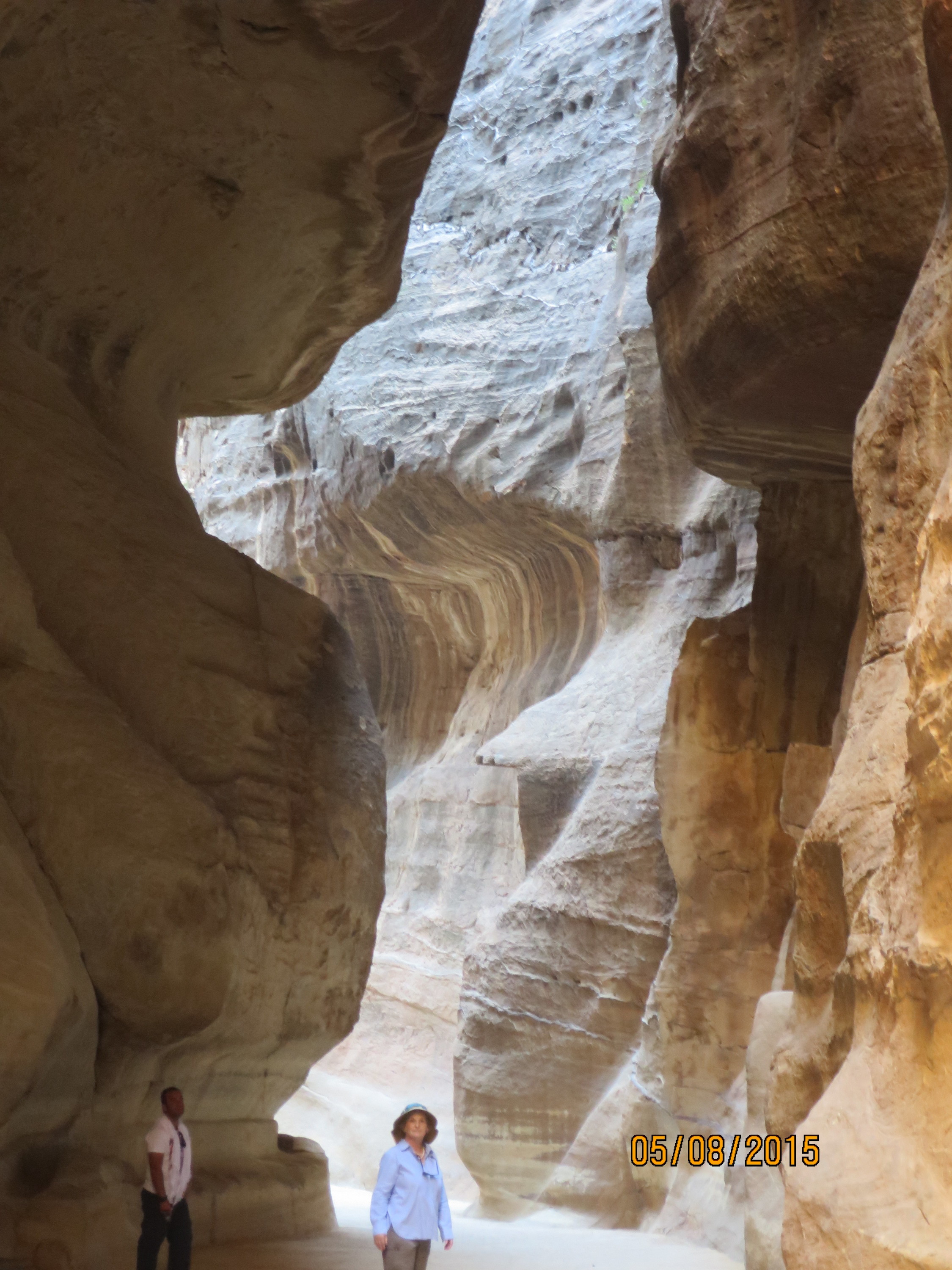
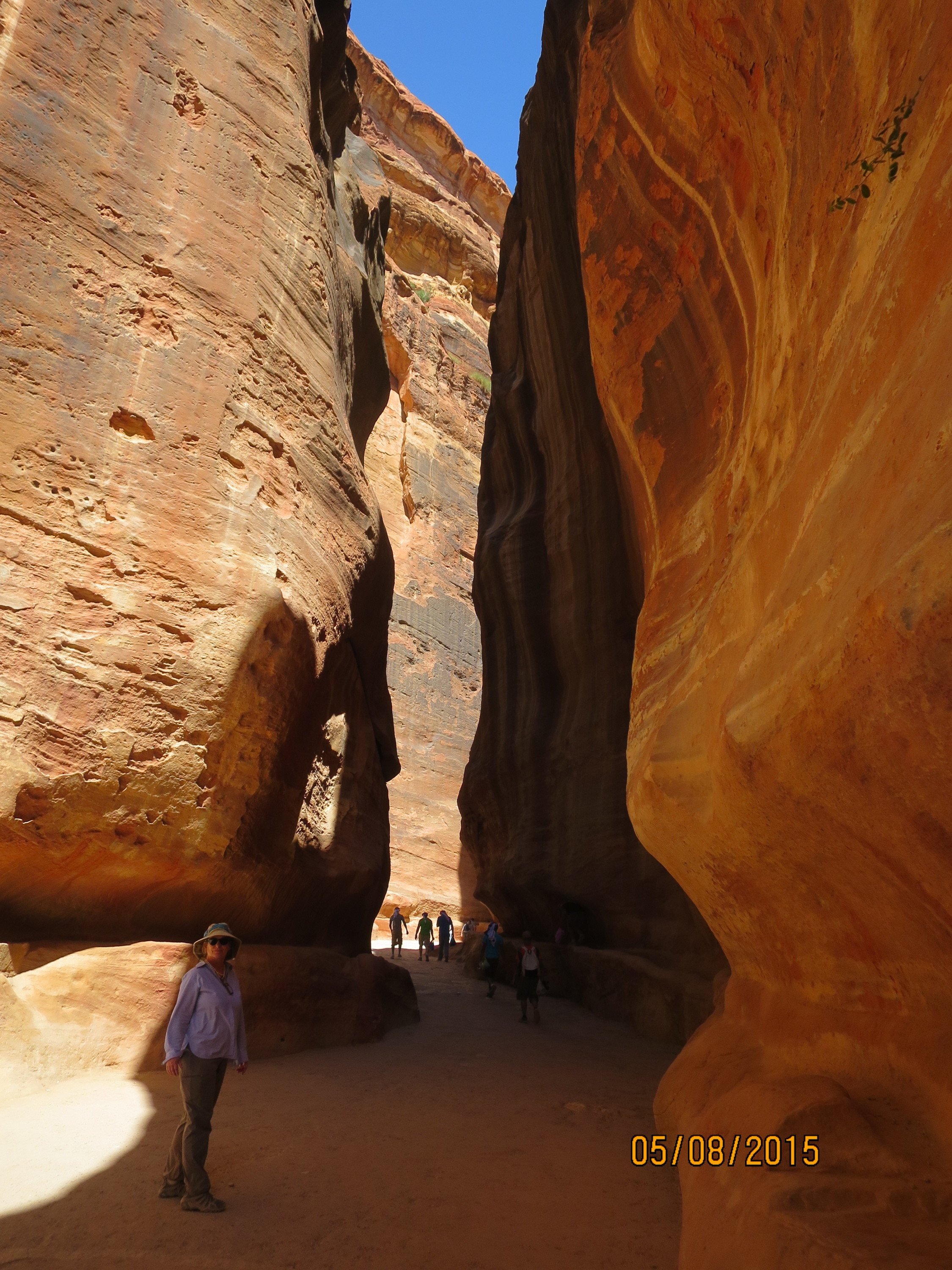
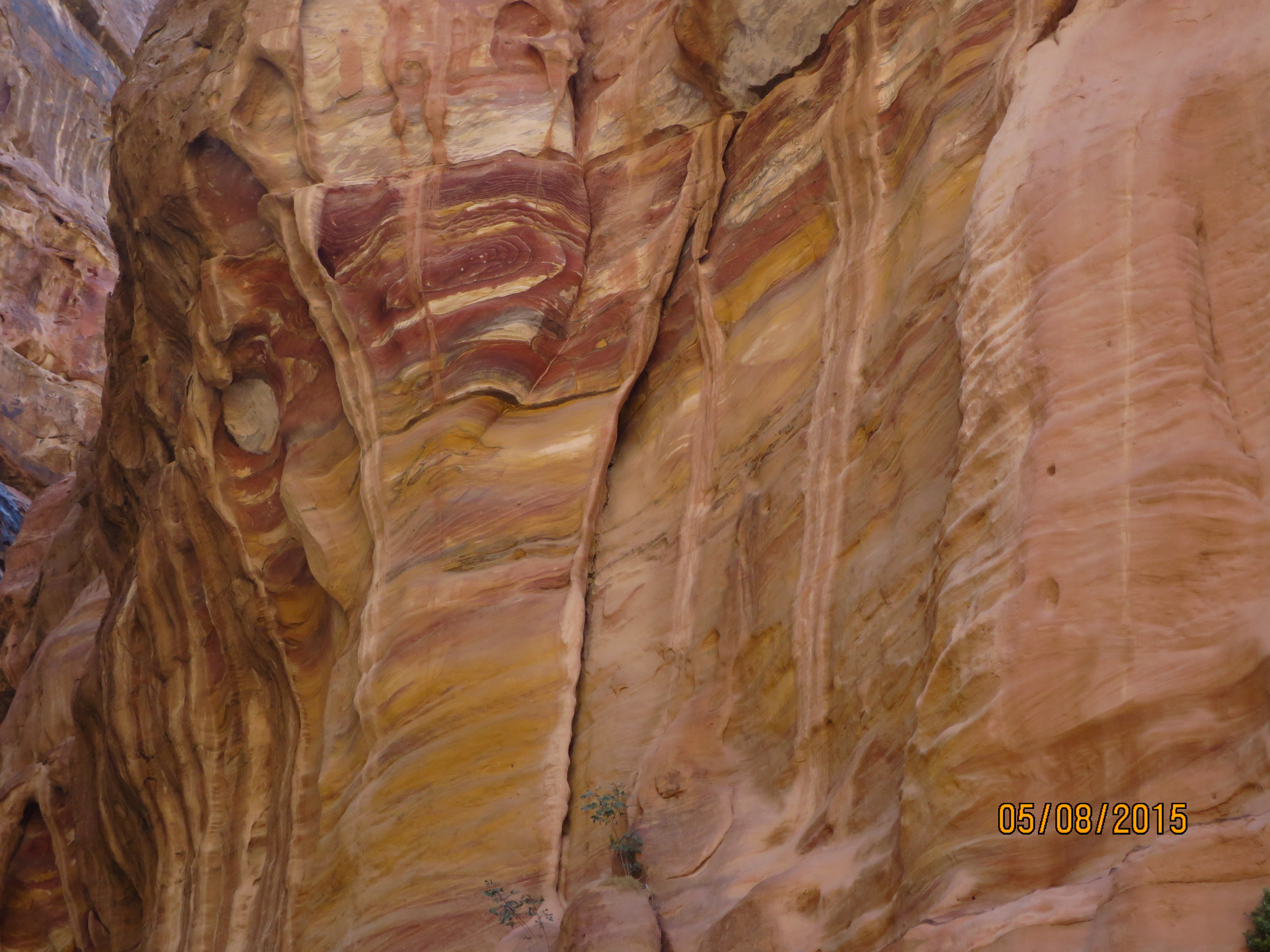
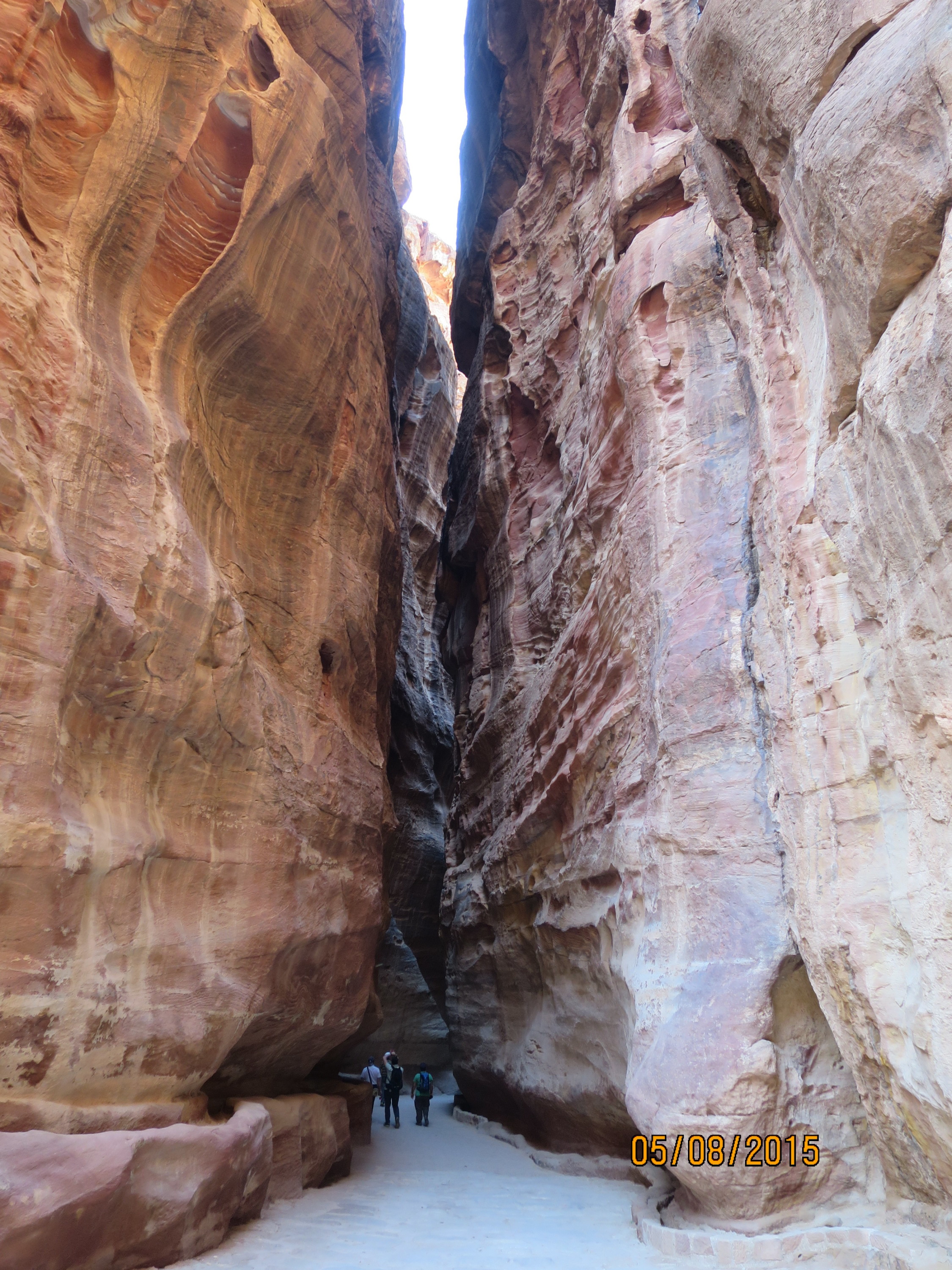
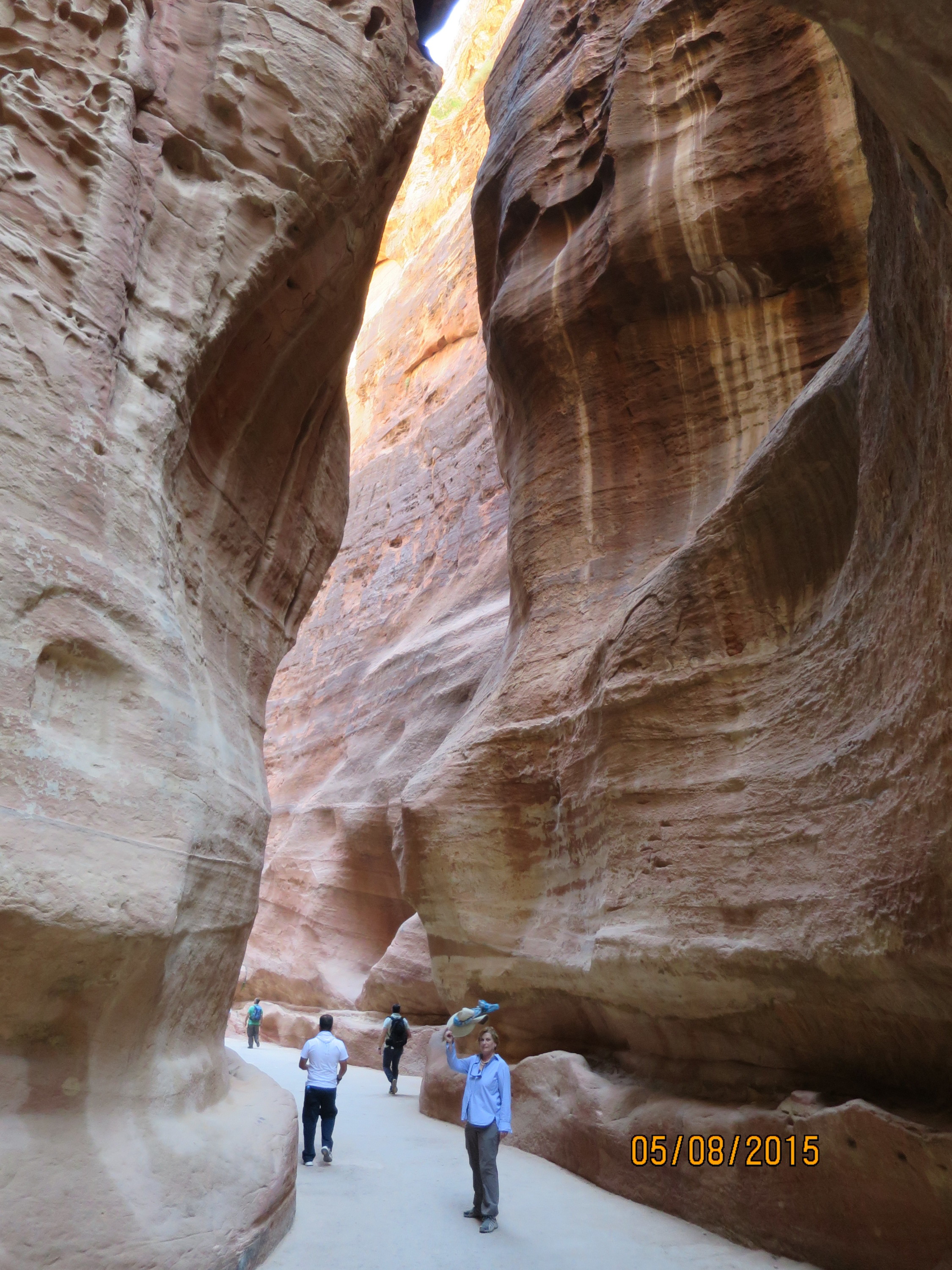
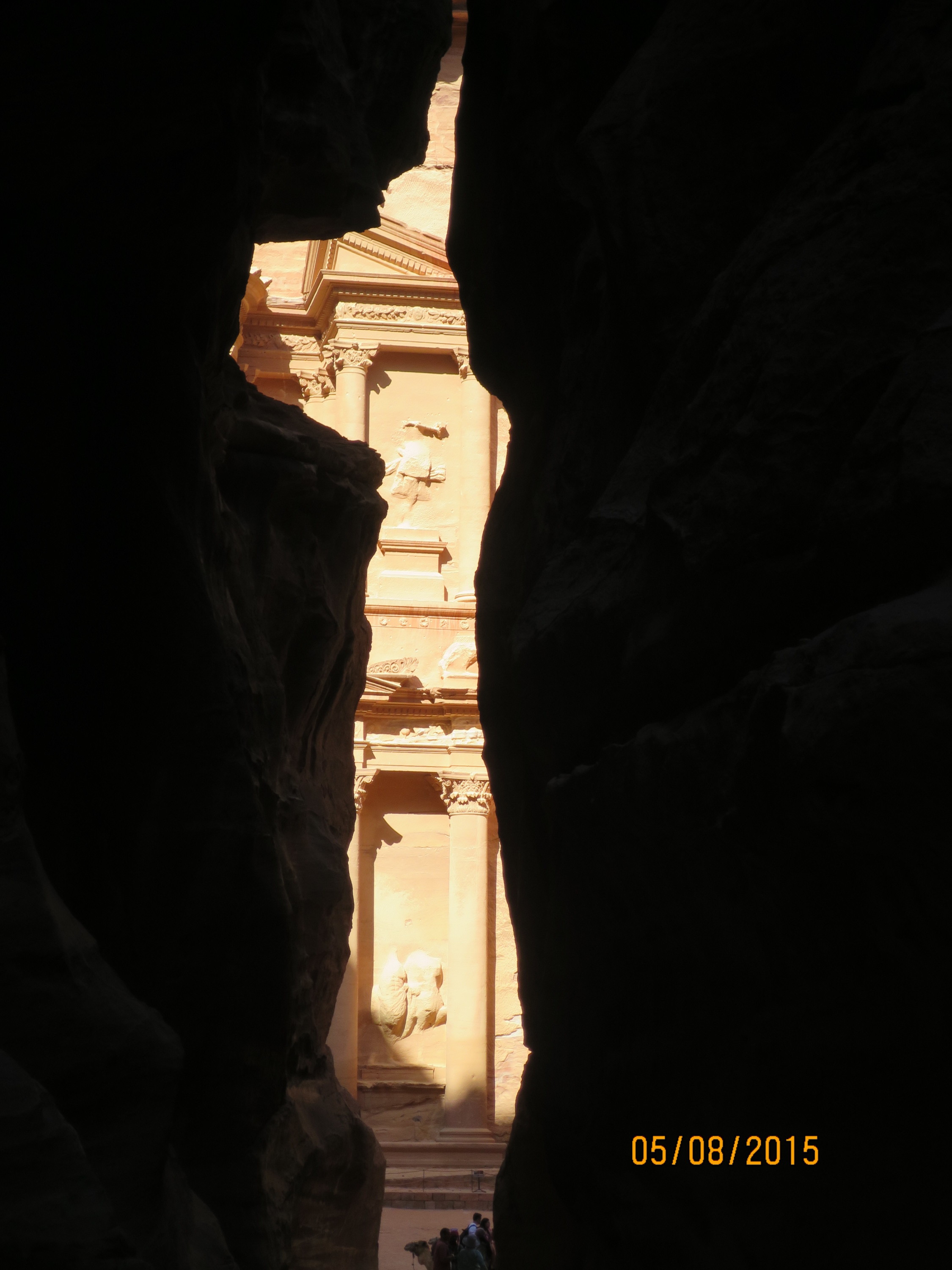
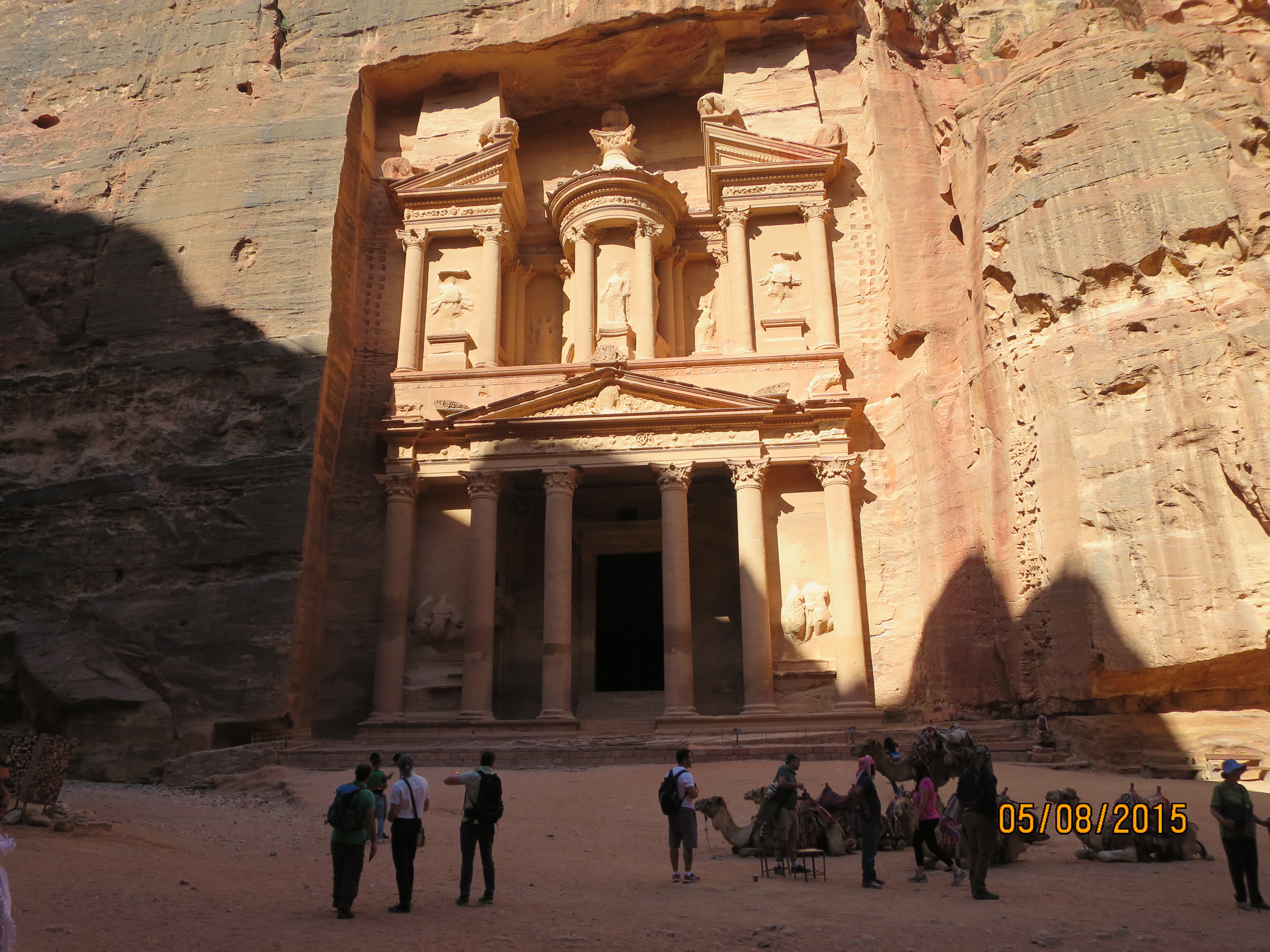
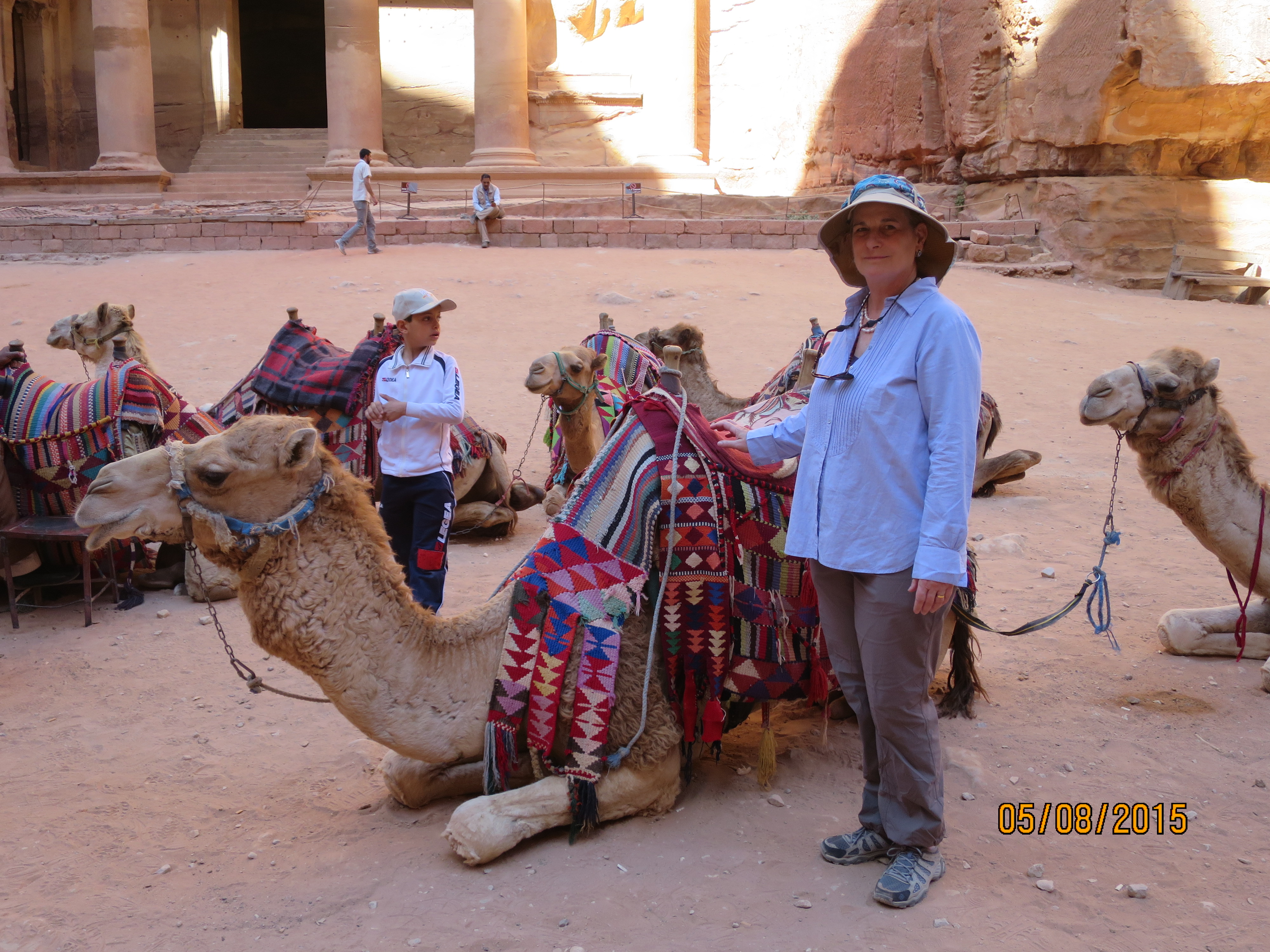
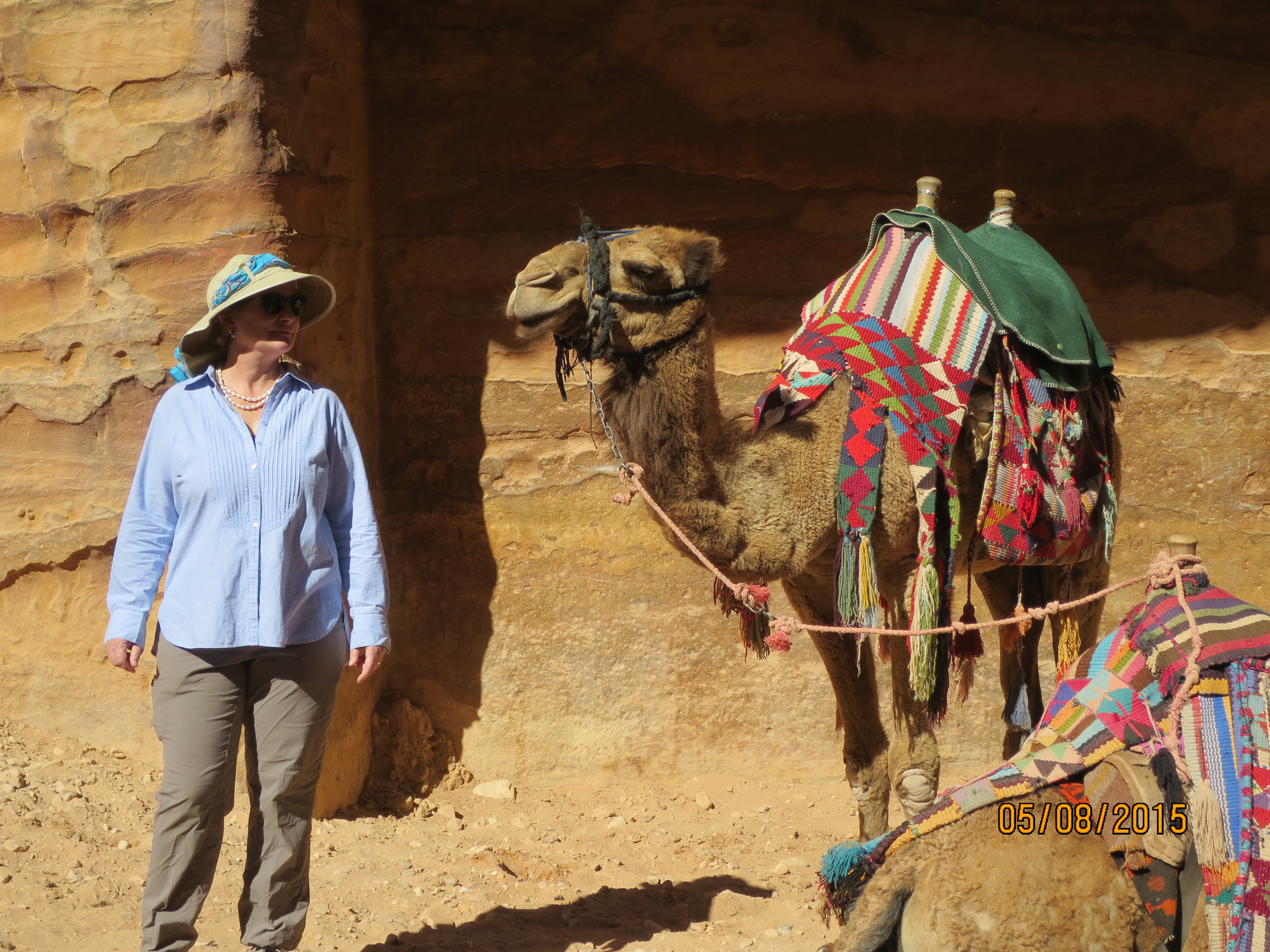
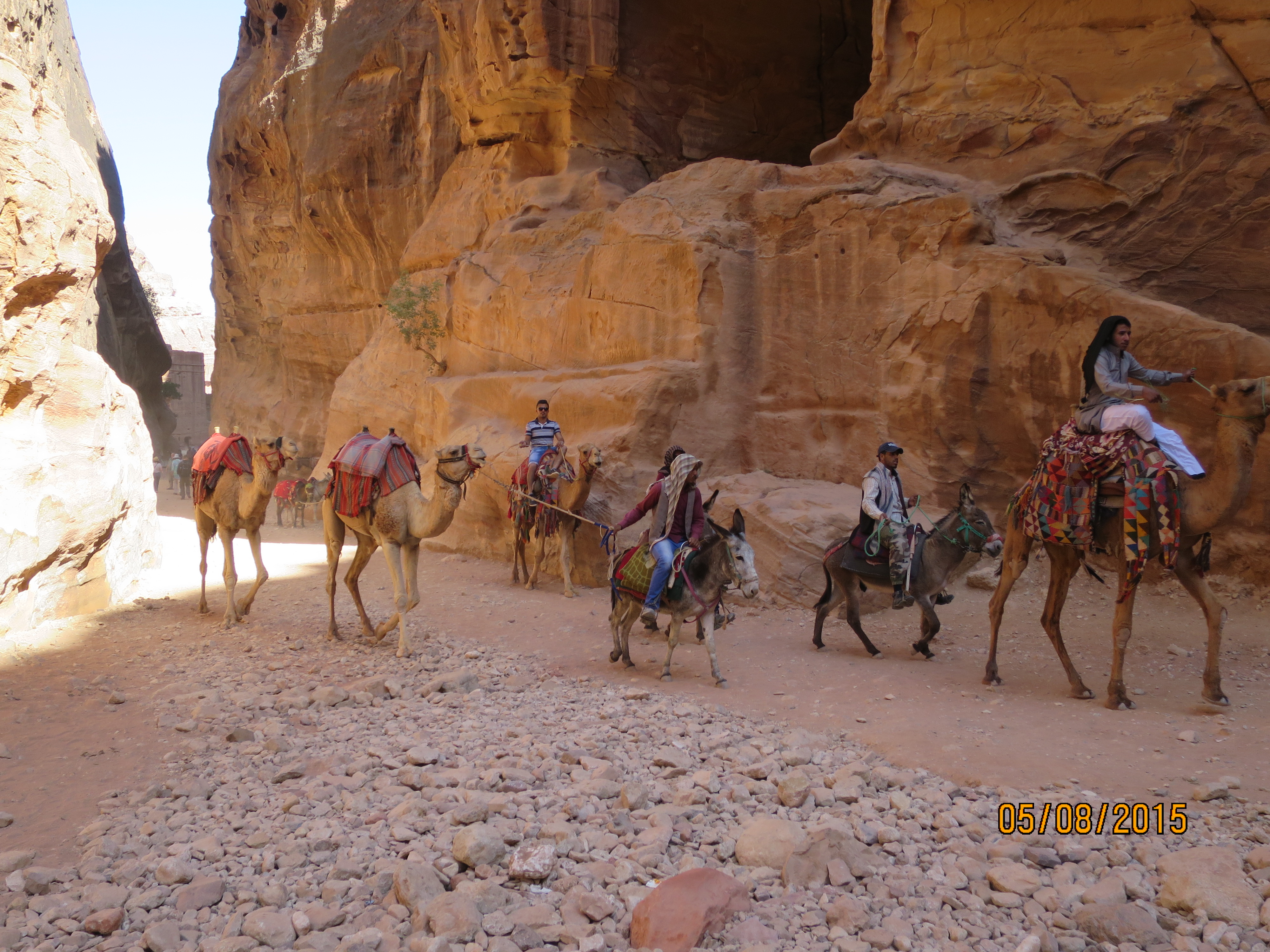
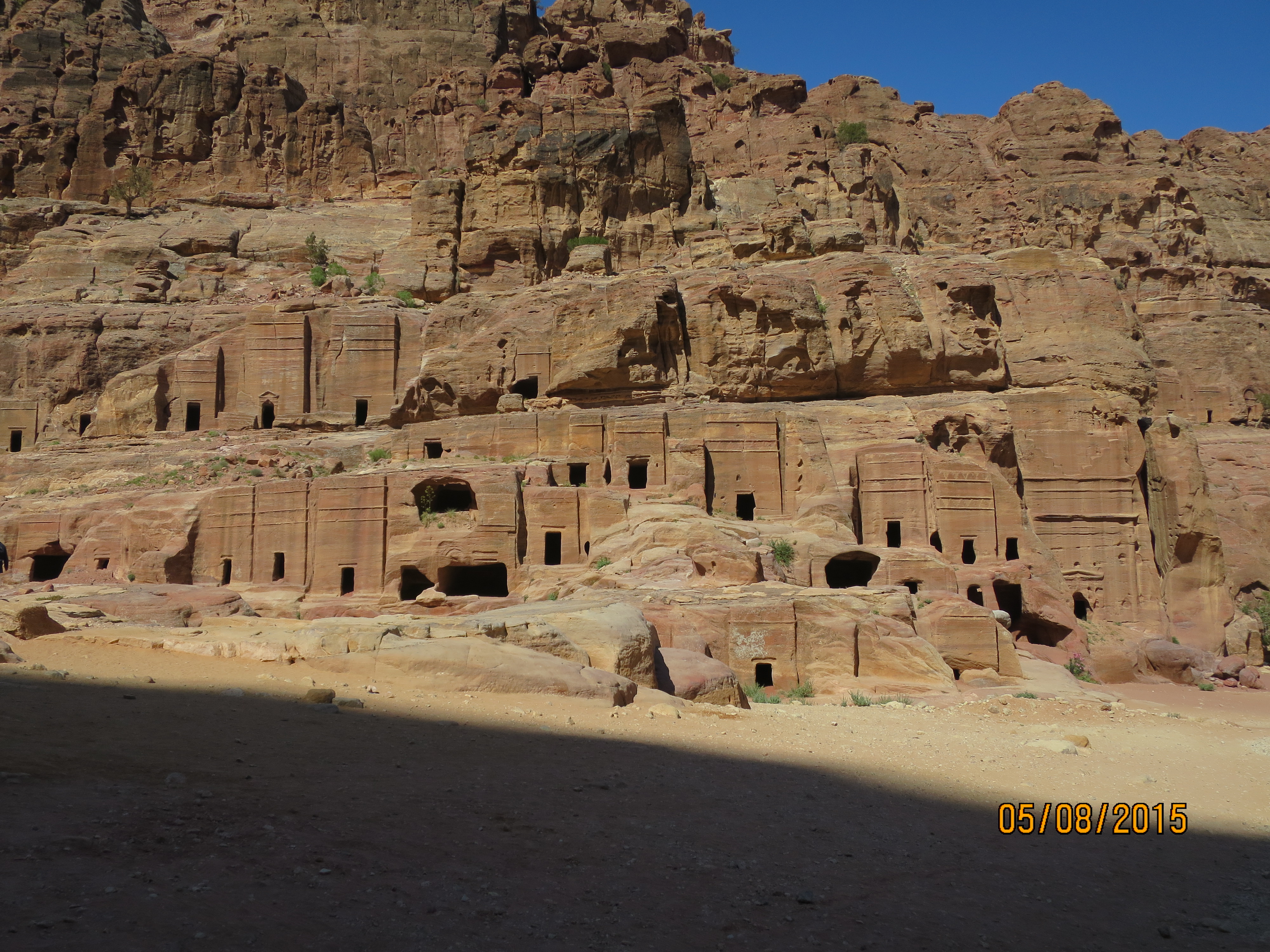
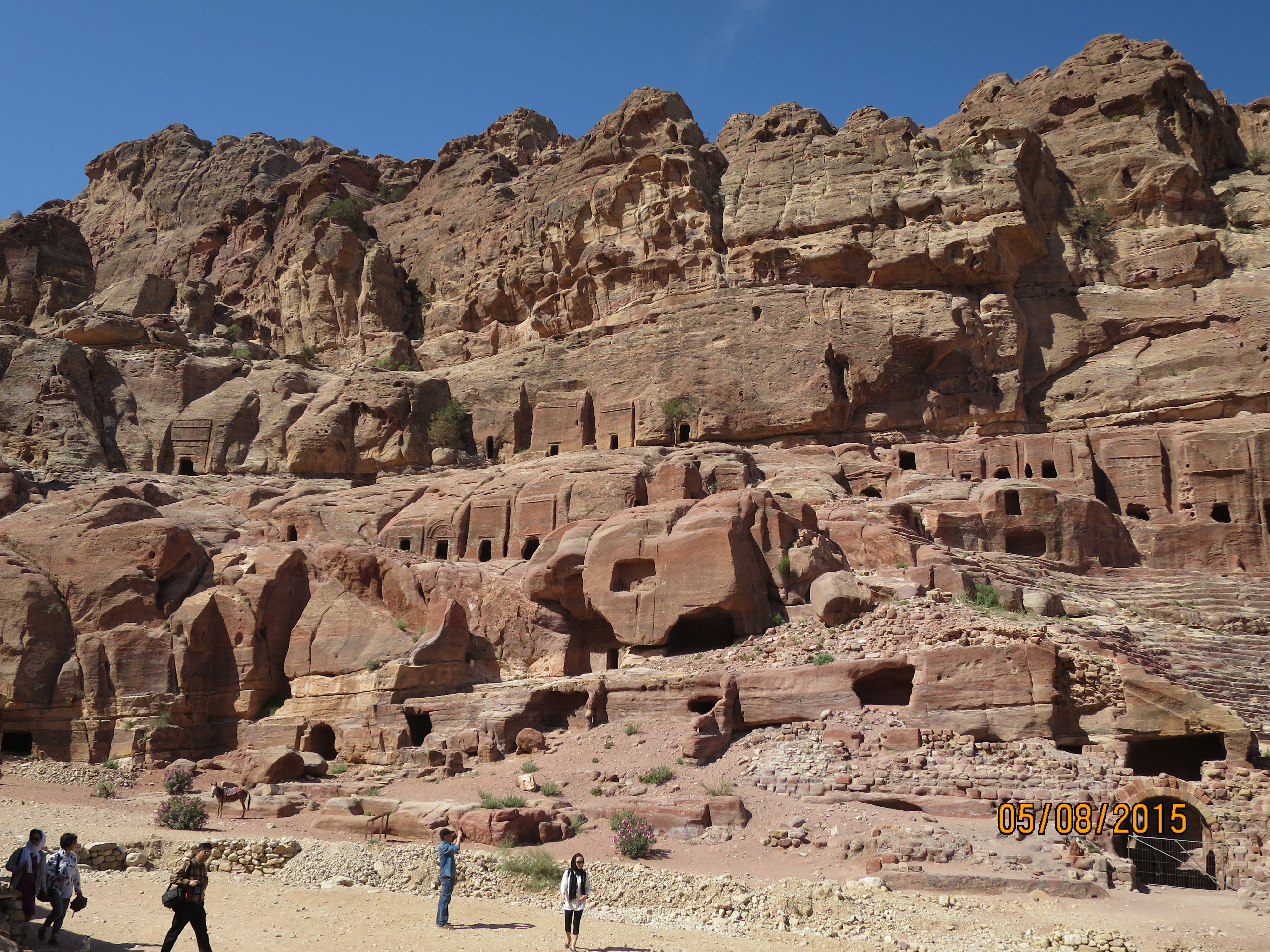
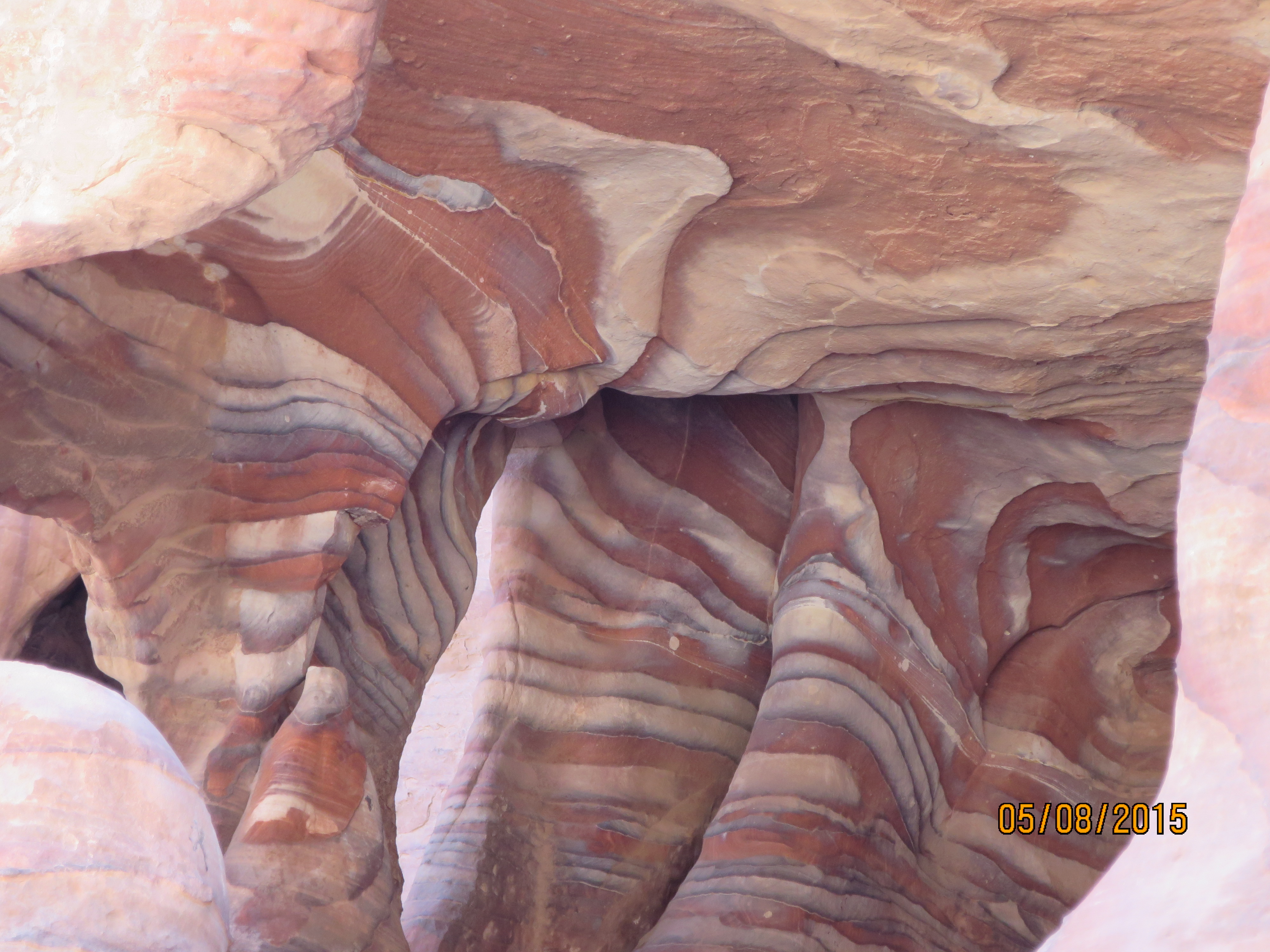
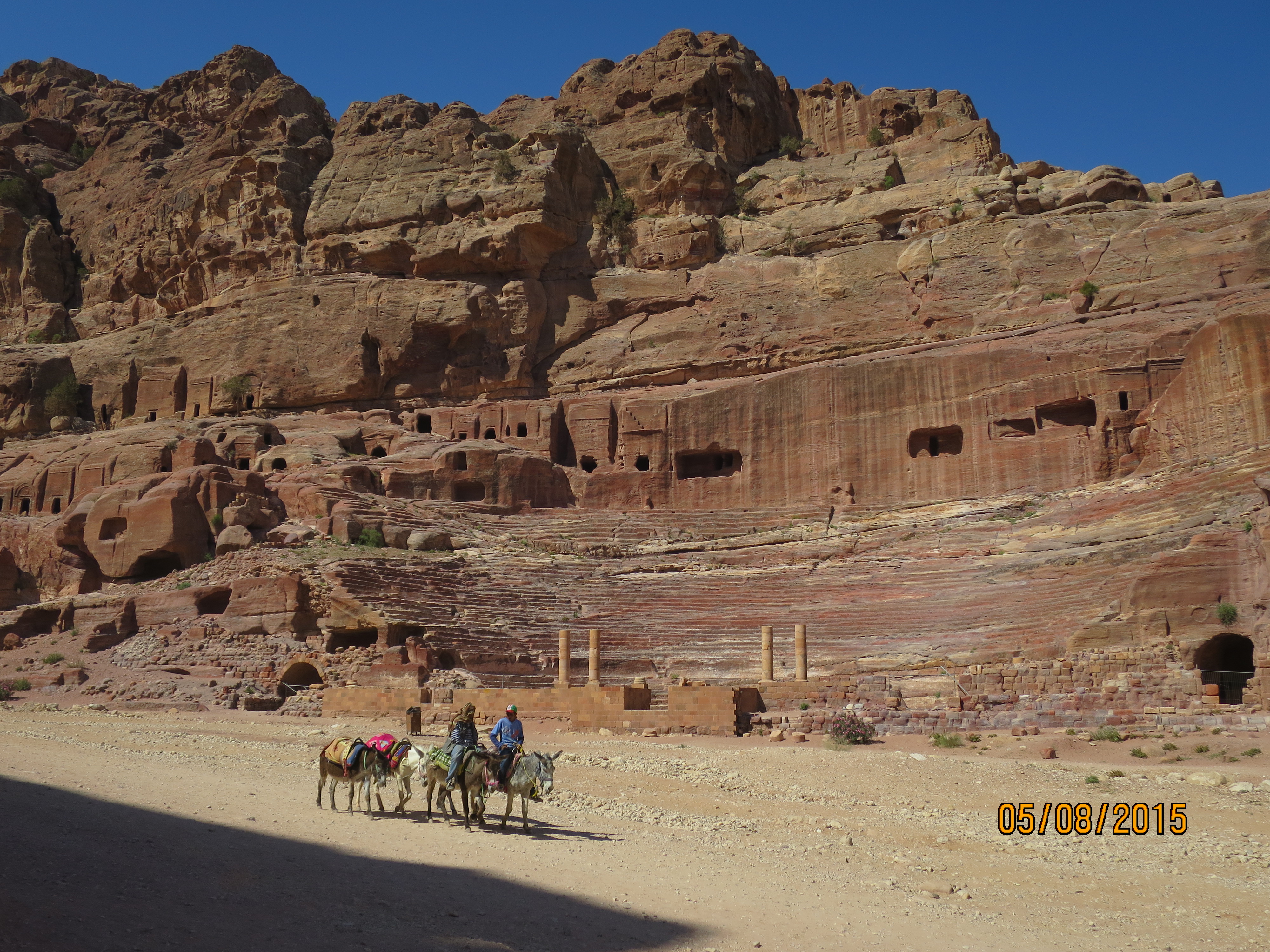
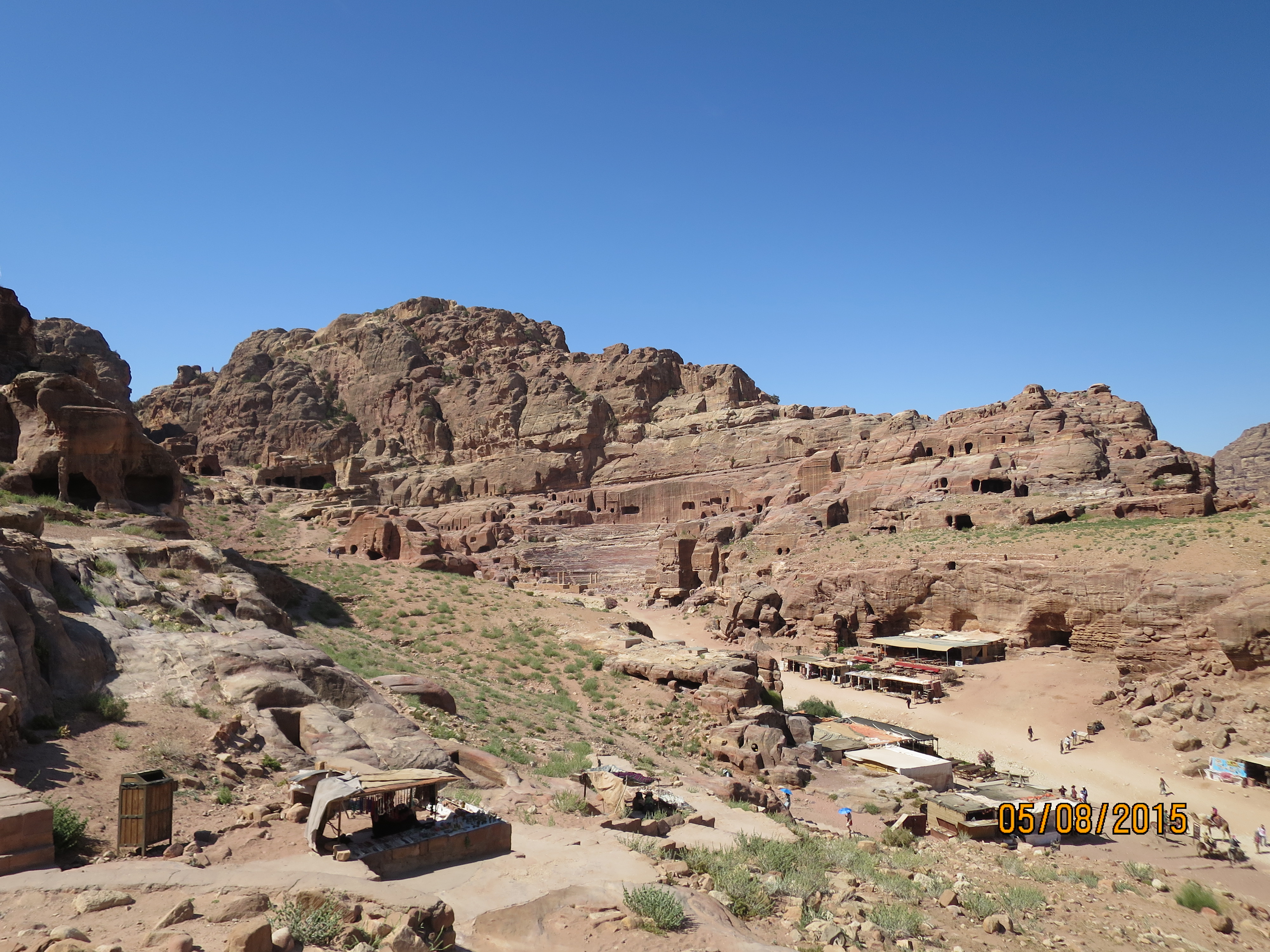
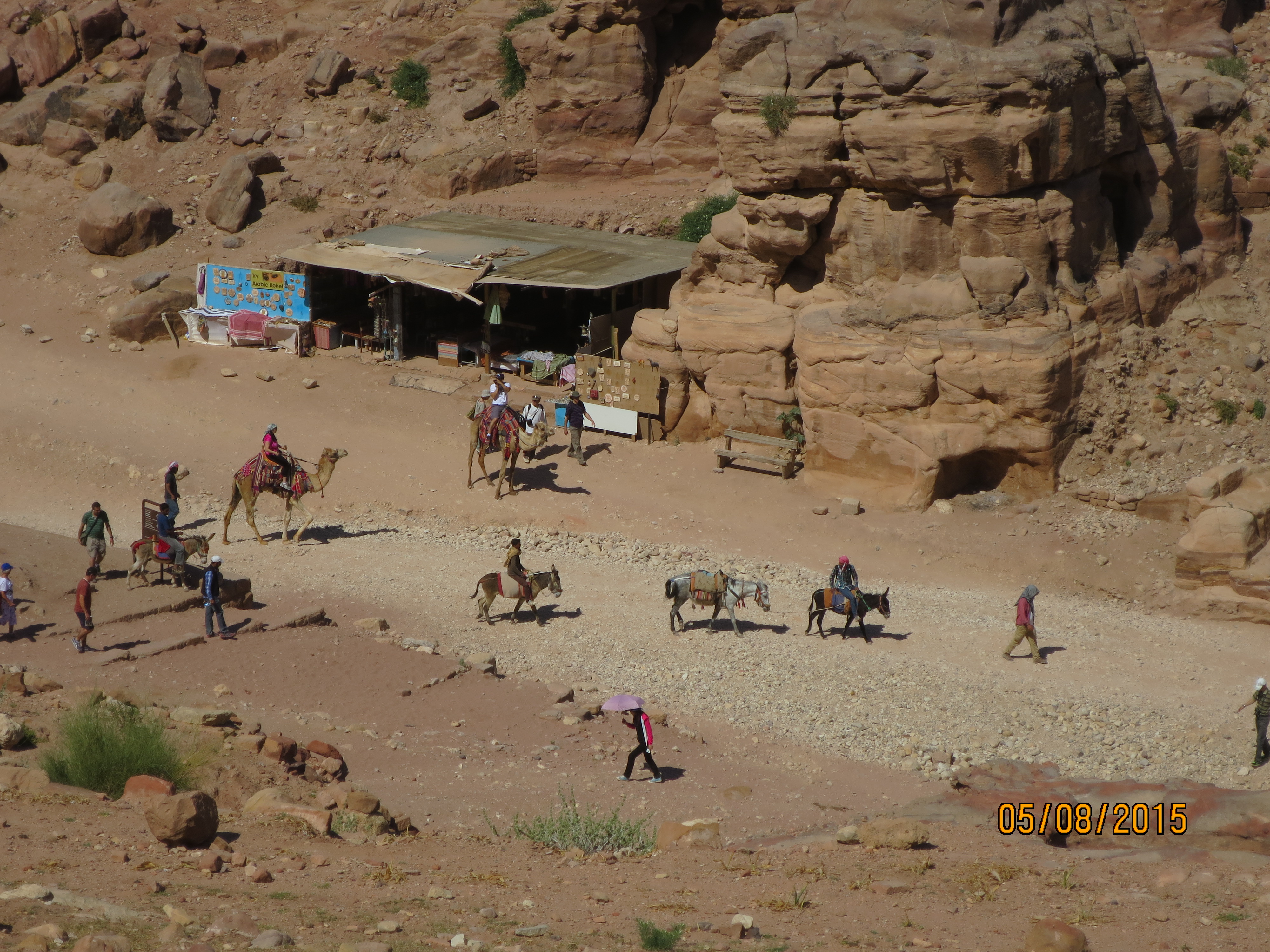
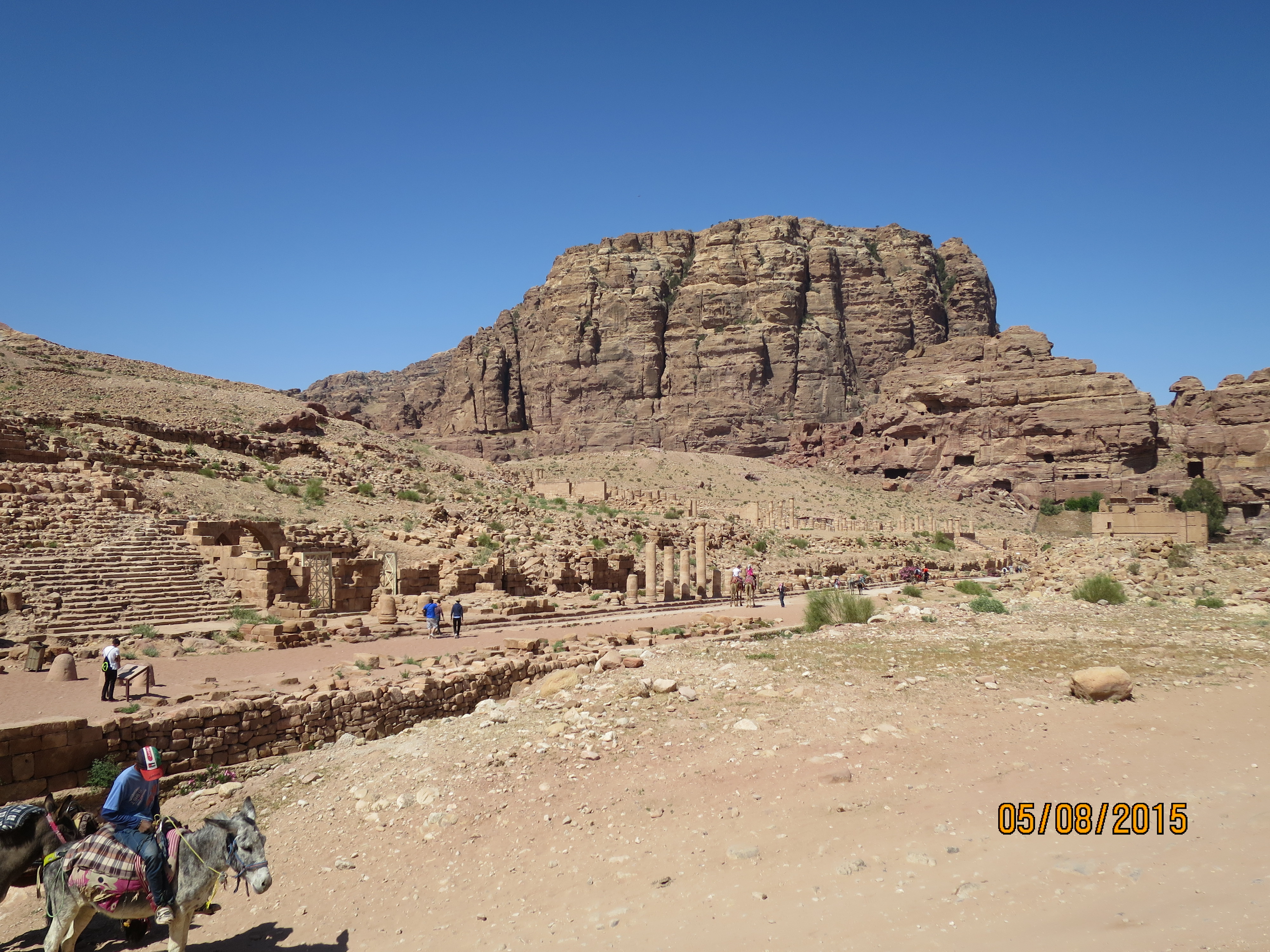
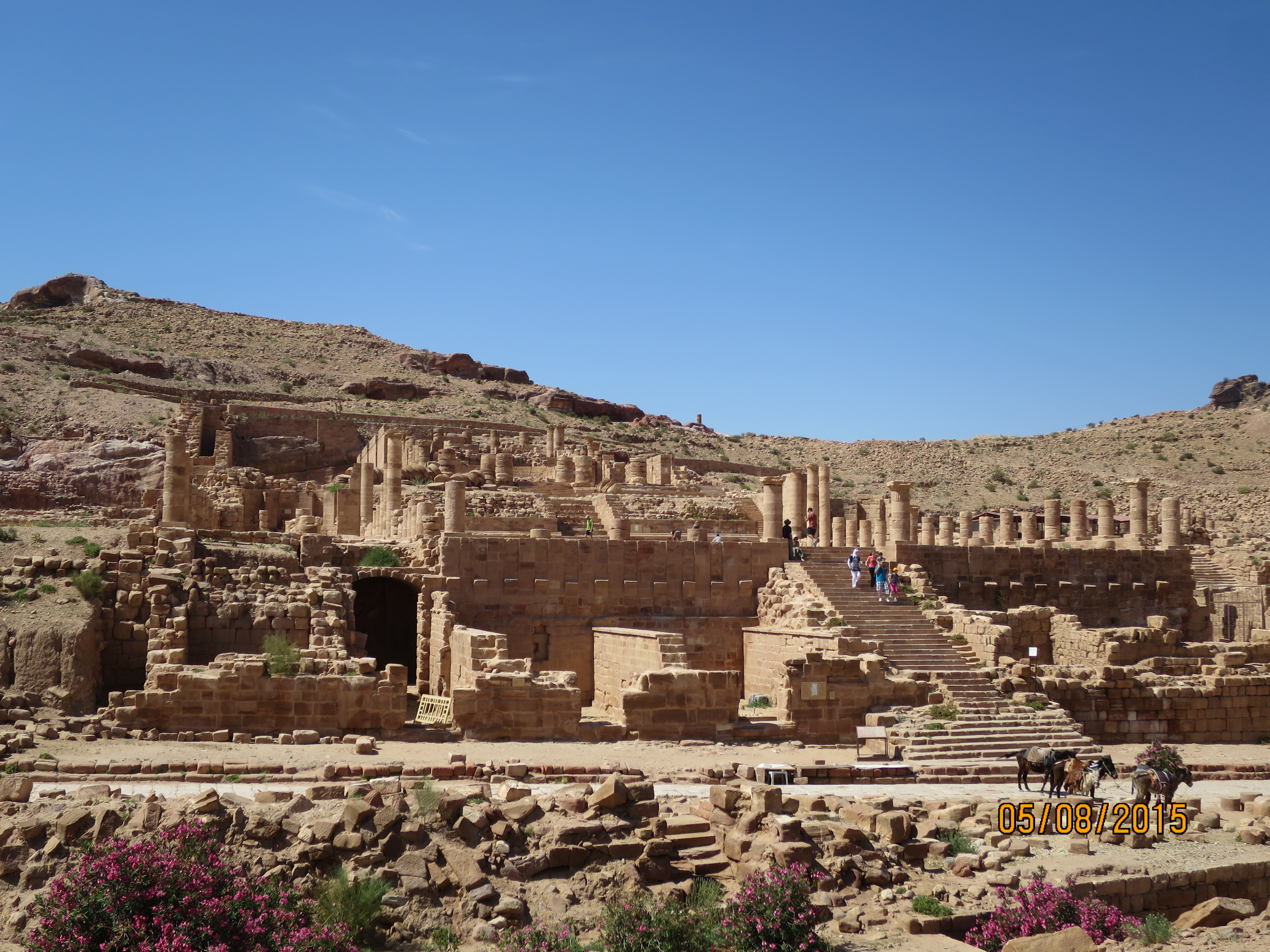
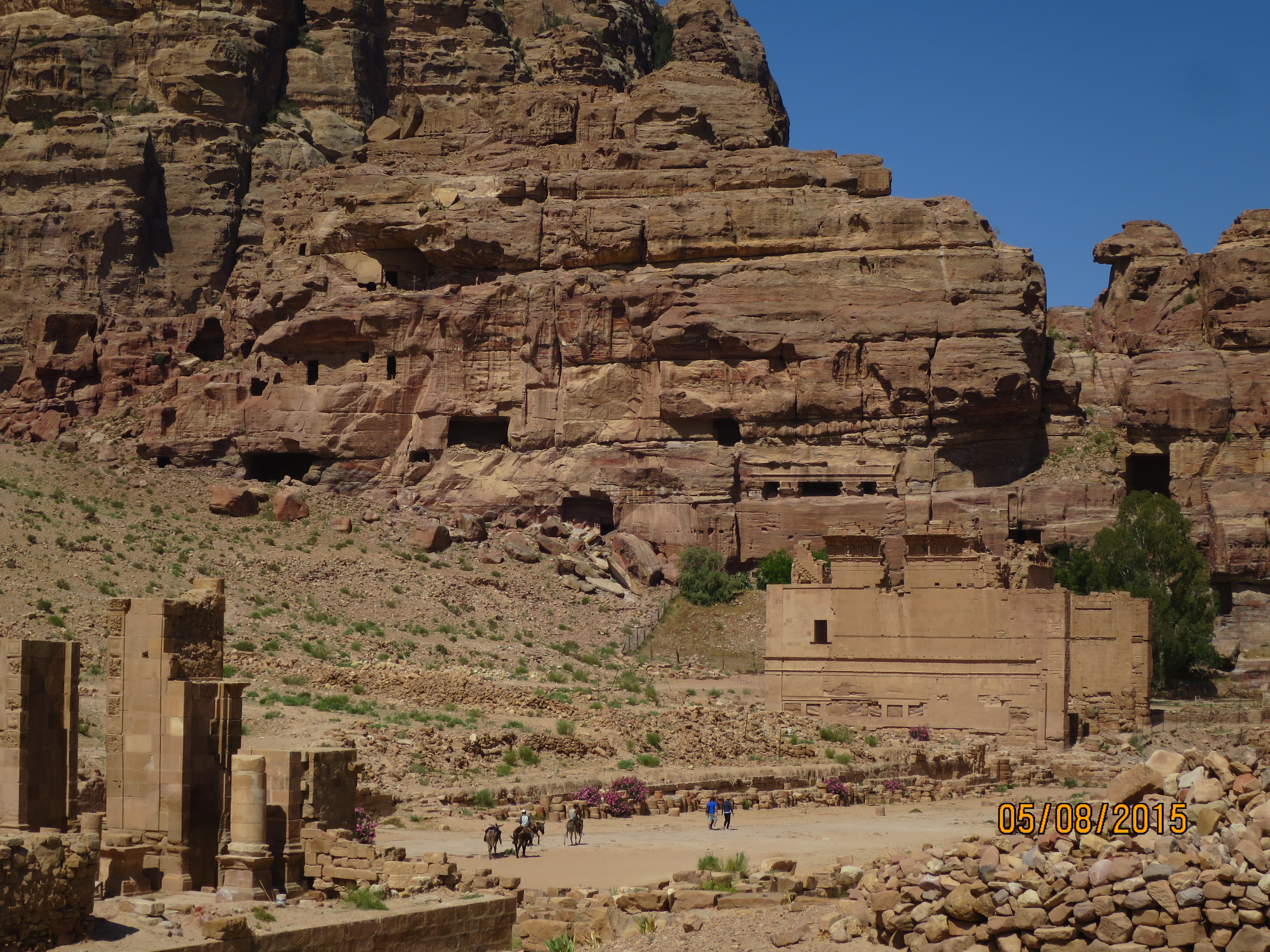
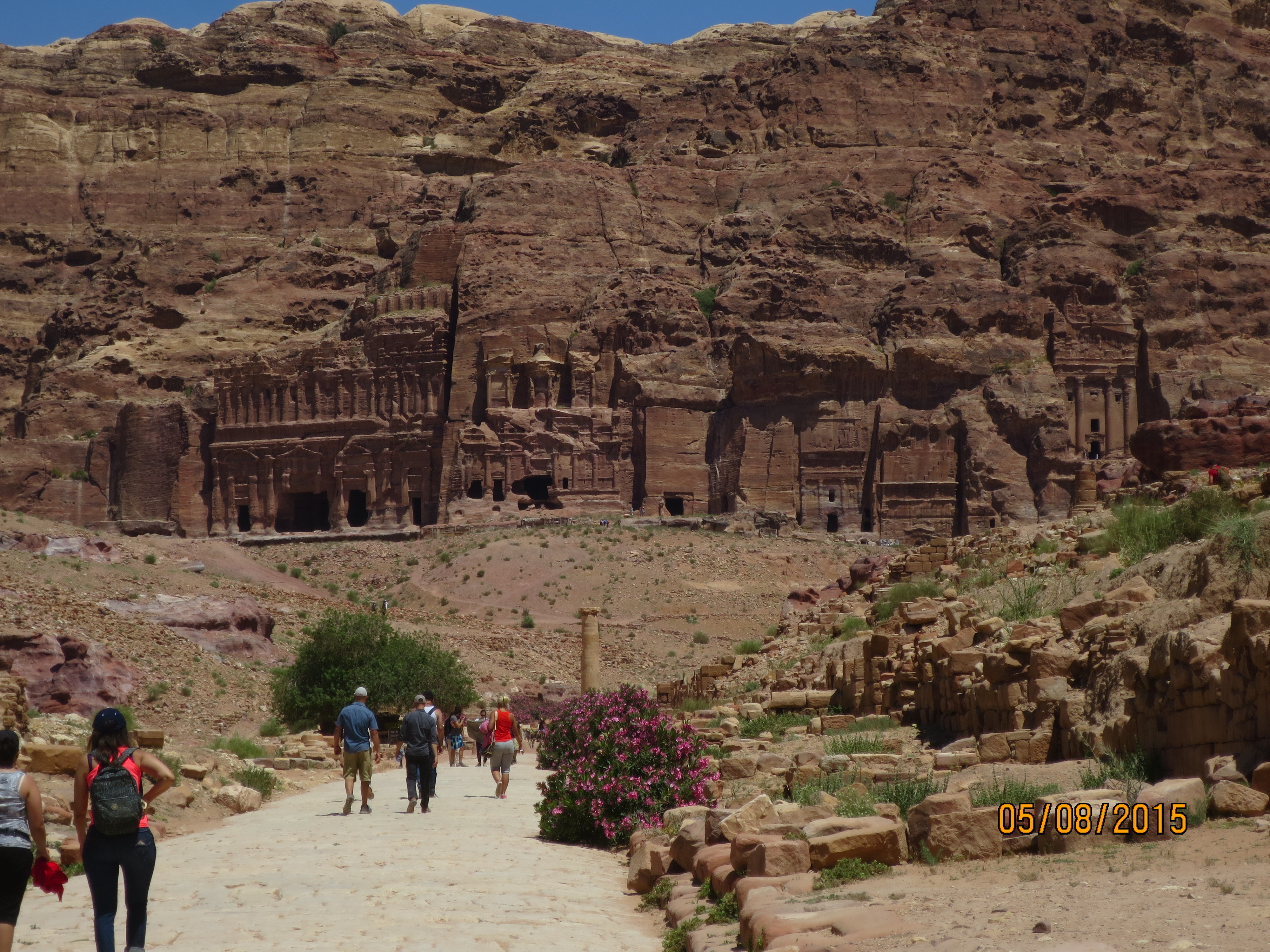
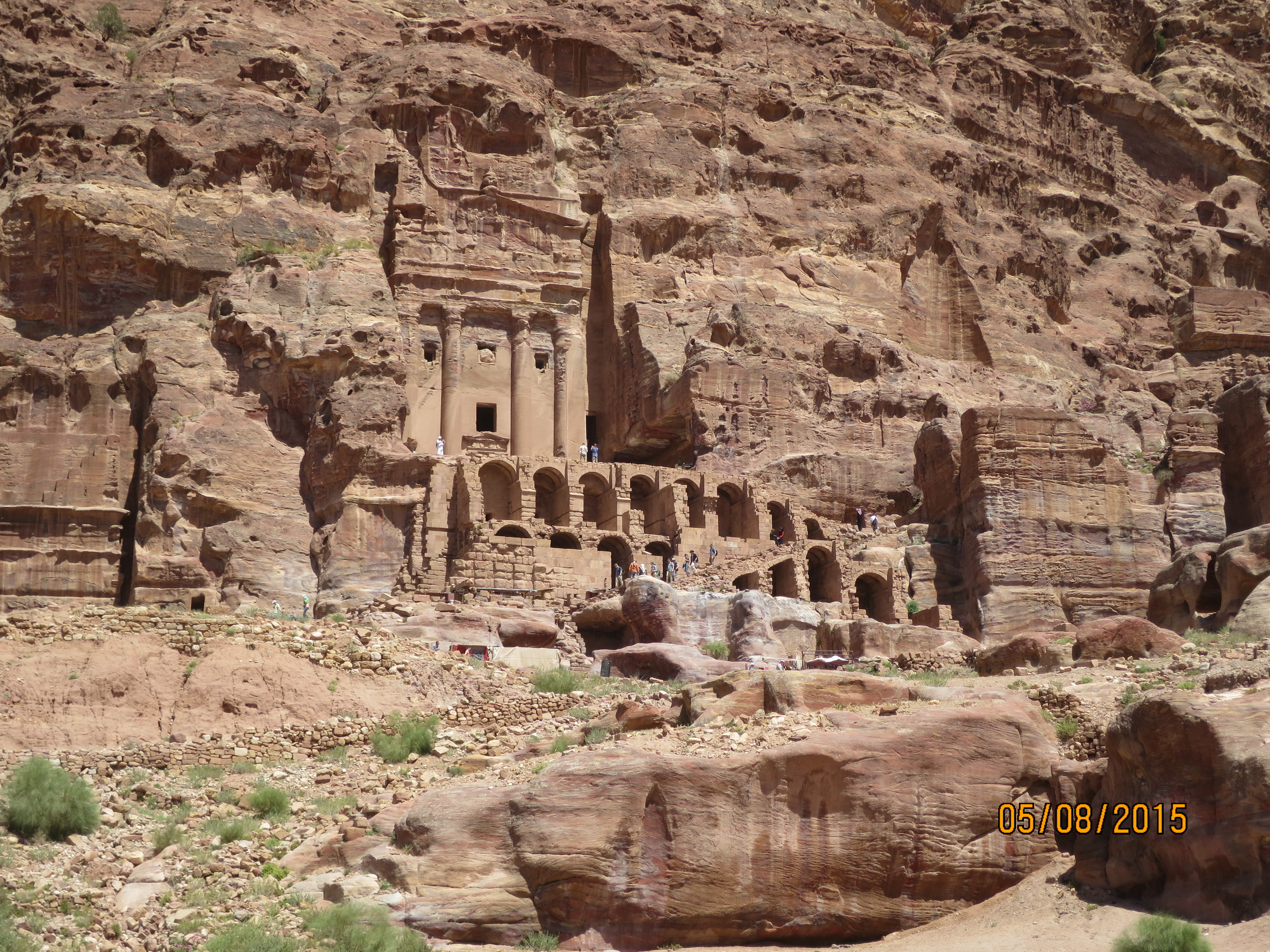
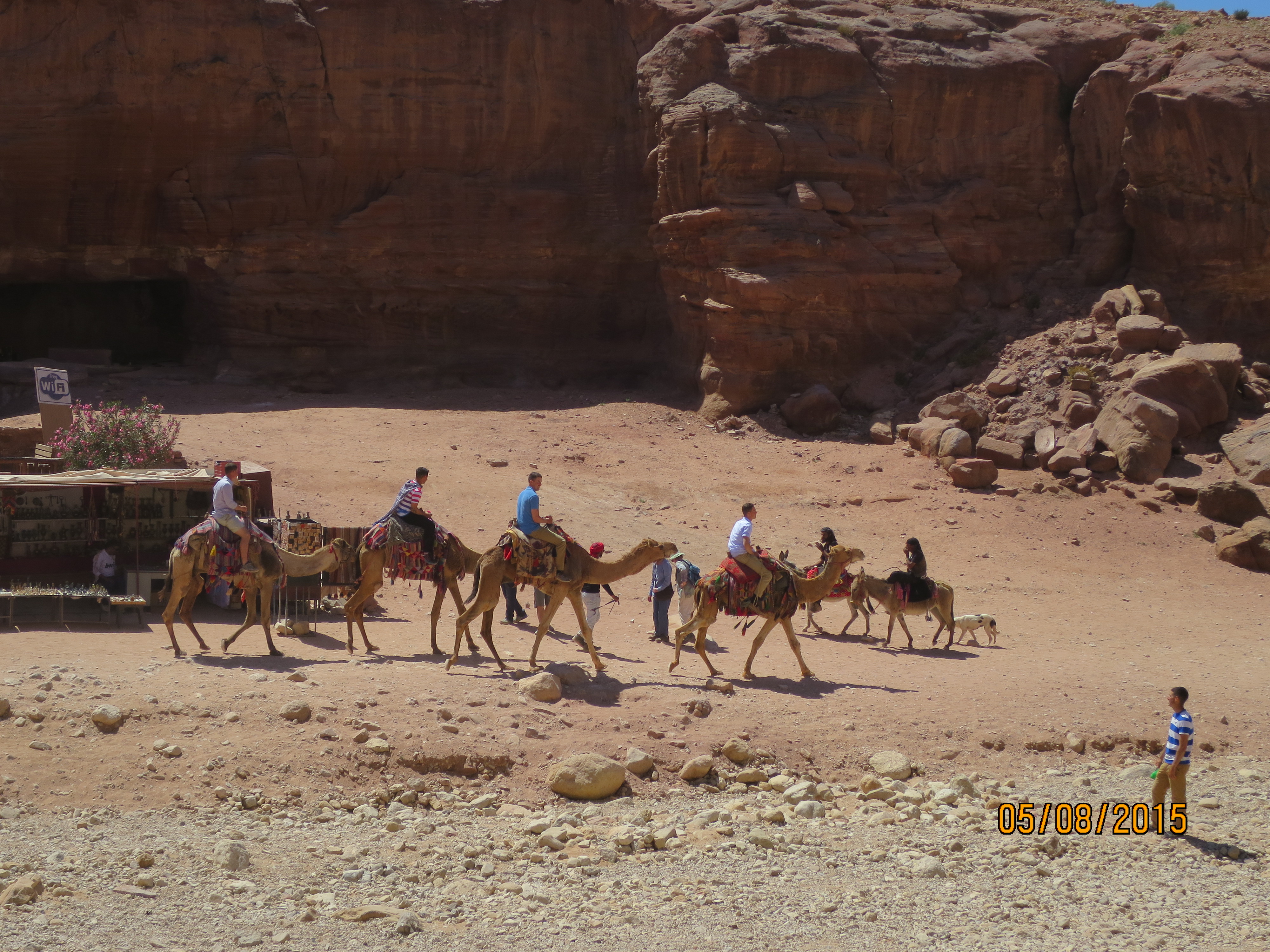
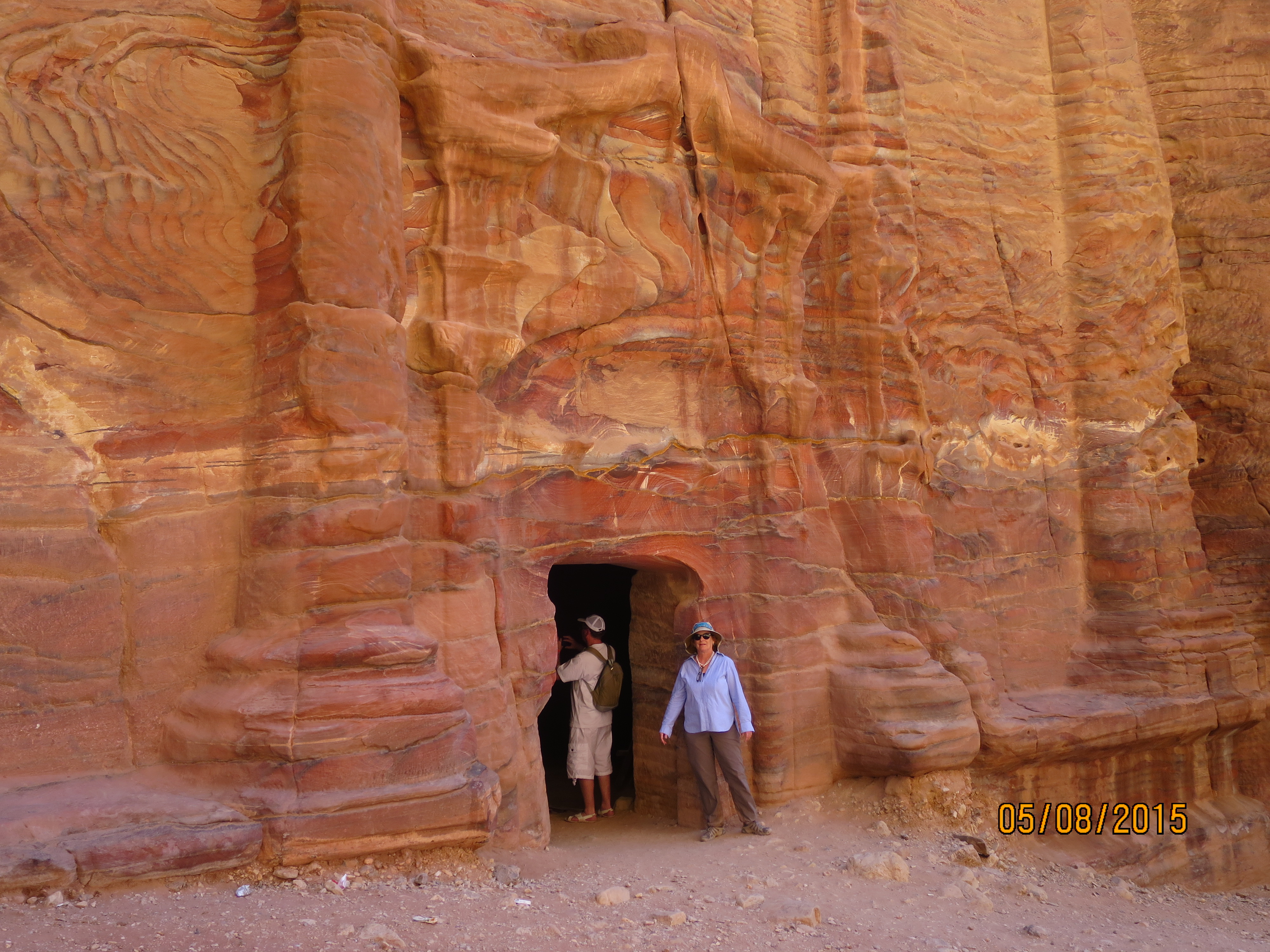
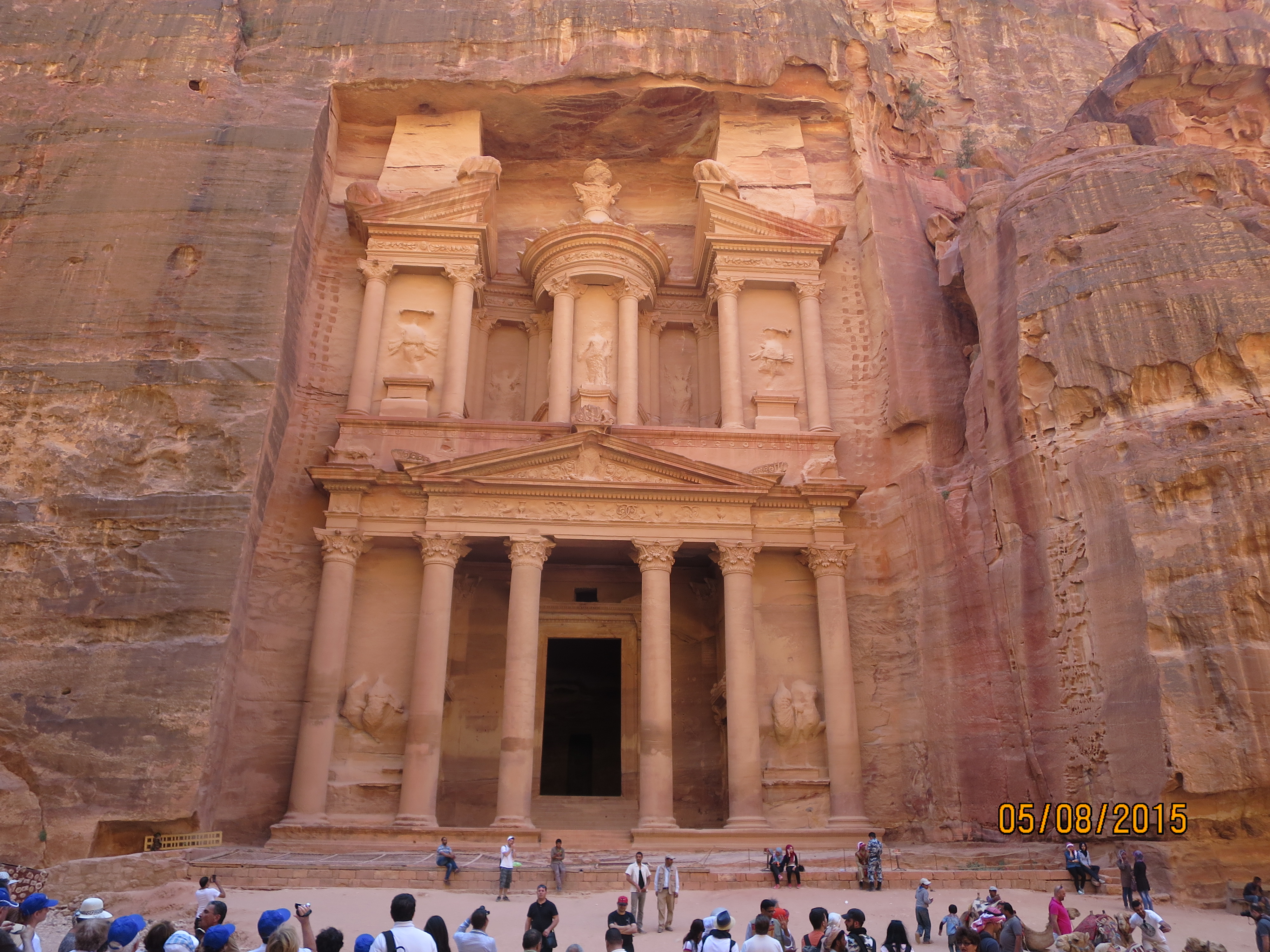
stunning!!!
Looks like a great place to rock climb if you were into it.
Great photos! Makes me want to see if there are illustrations of how the town would have looked before it became ruins.
You’re right – the colors of the rocks are really beautiful.